How to Summarize a PowerPoint Presentation: A Step-by-Step Guide
Summarizing a PowerPoint presentation is a skill that can come in handy in various situations. Maybe you’ve just watched a colleague’s presentation and need to report back to your team, or perhaps you’re studying for an exam and want to condense the material. To summarize a PowerPoint effectively, you’ll need to identify the key points, understand the presentation’s purpose, and distill the information into a concise format. By mastering these steps, you’ll be able to communicate the essence of any presentation to your audience efficiently.
Once you’ve summarized the PowerPoint presentation, you’ll have a handy reference that captures the main ideas and supporting details without the fluff. This summary can serve as a study aid, a quick refresher, or a tool to brief others who may not have the time to go through the entire presentation.

Introduction
Let’s face it, sitting through a lengthy PowerPoint presentation can sometimes feel like a chore, especially when all you need are the highlights. Maybe you’re a busy professional with back-to-back meetings, a student juggling multiple assignments, or just someone who values efficiency. Whatever the case, being able to summarize a PowerPoint presentation is a valuable skill that can save you time and keep you informed.
Why is this ability so important? For starters, it helps you to quickly sift through information and focus on what’s essential. In our fast-paced world, time is of the essence, and being able to distill a lengthy presentation into a few key points can be a game-changer. Moreover, it’s not only about personal convenience; summarizing skills are crucial when you have to convey the gist of a presentation to others. Whether you’re briefing a colleague, preparing notes for a study group, or delivering a report to a client, a well-crafted summary can make all the difference. So, let’s dive into the how-to of summarizing a PowerPoint presentation, shall we?
Step by Step Tutorial: How to Summarize a PowerPoint Presentation
Before we jump into the steps, let’s establish what we’re aiming for. A good summary of a PowerPoint presentation should capture the main ideas, the supporting details, and the presenter’s intended message, all while being brief and easy to understand.
Step 1: Review the Entire Presentation
Start by going through the entire PowerPoint presentation.
Reviewing the presentation in its entirety allows you to get a sense of the overall flow and the key themes. Pay attention to the title slides and the concluding slides, as they often contain the main message and summary points.
Step 2: Identify the Key Points
Look for the main ideas in each slide.
Each slide usually focuses on a single main idea. Look for bullet points, bolded text, or headings as clues to what the presenter considers important. Make note of these points as they will form the backbone of your summary.
Step 3: Understand the Purpose
Determine the purpose of the presentation.
Understanding why the presentation was created helps to frame your summary. Was it to inform, persuade, or instruct? Knowing the intent will guide you in deciding what details are crucial for your summary.
Step 4: Condense the Information
- Condense the information into a concise format.
Now that you have the key points and the purpose, start writing your summary. Aim to express the ideas as simply and clearly as possible, without losing the original meaning. If a slide’s content can be said in one sentence instead of three, do it.
Step 5: Review and Edit
Review your summary and refine it.
Go through your summary to ensure it’s coherent and that it accurately reflects the presentation’s content and purpose. Edit out any redundancies or unclear statements.
Additional Information
When summarizing a PowerPoint presentation, it’s essential to keep the audience in mind. Who will be reading your summary? What do they need to know? Tailoring the summary to the needs of your audience can make it more effective. Additionally, consider using visual aids from the original presentation, such as charts or graphs, if they help illustrate a point more clearly.
Remember, a good summary is not just a list of points but a coherent mini-version of the presentation. It should flow logically and be engaging to read. Lastly, practice makes perfect. The more you practice summarizing presentations, the better you’ll become at capturing the essence of the content. So next time you sit through a PowerPoint, why not give it a try?
- Review the entire PowerPoint presentation.
- Identify the key points in each slide.
- Understand the purpose of the presentation.
- Review and edit your summary.
Frequently Asked Questions
What if the powerpoint presentation is very long.
Start by breaking it down into sections, and summarize each section before attempting to summarize the whole presentation. This will make the task more manageable.
Can I include quotes from the presentation in my summary?
Yes, but use them sparingly and only if they emphasize a key point effectively.
Should I use the same slide titles in my summary?
You can, but it’s not necessary. The aim is to capture the main ideas, not to replicate the presentation’s structure.
Is it okay to leave out examples used in the presentation?
If the examples are used to illustrate key points, briefly mention them. Otherwise, focus on the main ideas and leave out specific examples.
How long should my summary be?
There’s no one-size-fits-all answer, but a good rule of thumb is to make it as brief as possible while still covering all key points.
Summarizing a PowerPoint presentation is an art and a skill that can be honed with practice. Whether you’re a student, a professional, or simply someone who values brevity, being able to condense information efficiently is incredibly valuable. Remember, the goal is to capture the essence of the presentation, not to replicate it.
Use your judgment to determine what’s essential and what can be left out. With the steps and tips outlined in this article, you’re well on your way to becoming an expert summarizer. So next time you’re faced with a lengthy presentation, don’t despair. Embrace the challenge and flex those summarizing muscles!

Matthew Burleigh has been writing tech tutorials since 2008. His writing has appeared on dozens of different websites and been read over 50 million times.
After receiving his Bachelor’s and Master’s degrees in Computer Science he spent several years working in IT management for small businesses. However, he now works full time writing content online and creating websites.
His main writing topics include iPhones, Microsoft Office, Google Apps, Android, and Photoshop, but he has also written about many other tech topics as well.
Read his full bio here.
Share this:
Join our free newsletter.
Featured guides and deals
You may opt out at any time. Read our Privacy Policy
Related posts:
- How to Set Time for Slides in Powerpoint
- How to Save Powerpoint as PDF with Notes
- How to Add Page Numbers in Powerpoint 2010
- How to Loop a Slideshow on Powerpoint 2013
- How to Delete a Slide in Powerpoint 2010
- How to Unhide a Slide in Powerpoint 2013
- How to End Powerpoint on Last Slide in Powerpoint 2010
- How to Hide a Slide in Powerpoint 2010
- How to Make a Powerpoint Slide Vertical in Powerpoint 2013
- How to Rotate a Slide in PowerPoint: A Step-by-Step Guide
- How to Change Hyperlink Color in Powerpoint 2010 (An Easy 5 Step Guide)
- How Is Microsoft PowerPoint Used in Business: A Comprehensive Guide
- How to Drag Slides From One PowerPoint to Another: A Step-by-Step Guide
- How to Duplicate a Slide in Powerpoint 2010
- How to Insert Slides from Another Presentation in Powerpoint 2010
- How to Copy a PowerPoint to a New PowerPoint: A Step-by-Step Guide
- How to: Effortlessly Create PowerPoint Looping Presentations
- How to Embed a GIF in PowerPoint: A Step-by-Step Guide
- How to Insert Clipart in PowerPoint: A Step-by-Step Guide
- How to Hide a Selected Slide in Powerpoint 2013
- Strategy Templates
Consulting Templates
- Market Analysis Templates

- Business Case

- Consulting Proposal
All Templates
How to write an effective executive summary like a mckinsey or bcg consultant.

Table of contents
Key components of an effective executive summary, an in-depth look at each component of the executive summary (with examples), some practical tips and tricks, the bottom line.
Management consultants at firms like McKinsey, BCG, and Bain are renowned for their ability to present complex ideas in a clear, concise manner that is easy to digest and understand. A key component of this process is the executive summary slide – often presented as the first part of a presentation deck on a given topic or problem.
An executive summary aims to provide the audience with an overview of the subject at hand or a snapshot of the key points that will be discussed in greater depth. It should serve to quickly get the main messages and conclusions across and motivate audiences to dive deeper into the details.
In this post, we will outline the essential components of an effective executive summary using techniques from McKinsey, BCG, and Bain. We will also provide tips on how to craft a compelling executive summary in practice and give examples of best practices.
For a broader view on how to create consultant-style presentations take a look at our blog post 'How McKinsey Consultants Make PowerPoint Presentations' .
A good executive summary provides all the key information in one slide. The goal is to communicate as much information in as few words as possible.
To achieve this goal, you should focus on the following key components when crafting an executive summary slide:
- [optional] Objective: Clearly state the purpose and objective of the presentation.
- Situation: Provide relevant background information to set the context for the problem or opportunity being addressed.
- Complication: Define the complication (problem or opportunity) the presentation addresses in simple, to-the-point sentences. This includes identifying the root cause of the problem or opportunity and its implications for the organization.
- Resolution: Present the recommended solution or solutions to the complication in a clear and concise manner. This should be based on data-driven insights and analysis.
- [optional] Benefits: Articulate the benefits of implementing the recommended solution. These benefits should be linked to the organization's strategic objectives.
- Call to Action: Provide a clear call to action outlining what the organization needs to do to implement the recommended solution. This should be actionable and linked to the organization's strategic objectives.
This structure is similar to the SCQA (situation-complication-question-answer) framework.
Craft effective executive summaries for your consulting presentations .
Let's take a closer look at each component of the executive summary and how it can be used to craft an effective executive summary deck using the McKinsey/BCG/Bain methodology.
1. Objective
The objective of the executive summary should succinctly define the purpose of the presentation and why it is important for the audience to understand the key points.
To craft an effective objective, you should consider the following:
- Who is the target audience?
- What are the key points that the audience needs to understand?
- What is the purpose of the presentation?
- Why is it important for the audience to understand the key points?
An effective objective should be brief, clear, and focused on the needs of the audience. It should be written to clearly communicate what the presentation will cover and why it matters.
Example: "This presentation will provide an overview of the current state of the industry and highlight key trends and opportunities for growth."
2. Situation
The background or situation section of the executive summary provides relevant context to the audience to help them better understand the problem or opportunity being addressed.
This section should include:
- Relevant background information on the industry, market, or organization.
- Any key trends or developments that are important to the problem or opportunity being addressed.
- Any relevant historical information that helps to explain the current situation.
Some questions to ask when crafting the background section include:
- What is the context for the problem or opportunity being addressed?
- What are the key factors that have led to the current situation?
- What are the relevant historical or industry-specific factors that are important to understanding the problem or opportunity?
An effective background section should be concise and focused on the most important information. It should provide enough context for the audience to understand the problem or situation being addressed without overwhelming them with unnecessary information.
Here are some examples from McKinsey and BCG:
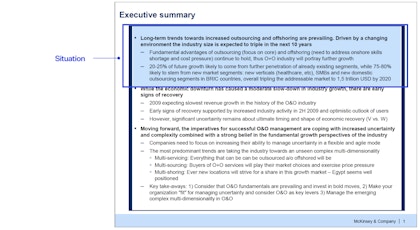
3. Complication
The complication section of the executive summary clearly and concisely defines the reason the situation requires action, either because there is a serious problem or there is a good opportunity. This includes identifying the root cause of the problem or opportunity and its implications for the organization.
- What is the problem or opportunity that the presentation is addressing?
- What are the root causes of the problem or opportunity?
- What are the implications of the problem or opportunity for the organization?
An effective complication section should be short and to-the-point, focusing on the most important aspects of the problem or opportunity. The root cause of the complication should be clearly identified, along with the most relevant data or evidence that supports this analysis. In addition, the implications of the problem or opportunity for the organization should be clearly articulated, highlighting why it is important for the audience to understand the problem/opportunity and its impact and why it requires action.
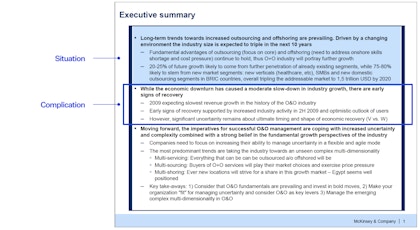
Enhance your proposal writing with our Consulting Proposal template , or explore our collection of 10 Real Consulting Proposals .
4. Resolution
The resolution section of the executive summary presents the proposed solution or strategy for addressing the complication. This should include a brief overview of the approach and any relevant supporting information or evidence.
- What is the proposed approach for addressing the problem or opportunity?
- What are the key elements of the strategy?
- What are the expected benefits or outcomes of the approach?
- What evidence is there to support the proposed solution or strategy?
An effective resolution section should provide enough detail for the audience to understand what is being proposed and why without overwhelming them with unnecessary detail. The proposed approach and any relevant supporting information or evidence should be clearly outlined. In addition, the expected benefits or outcomes of the approach should be highlighted, as this helps to emphasize why it is important for the audience to understand and support the proposed solution.
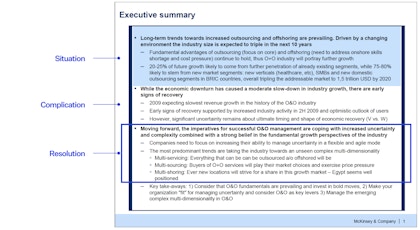
5. Benefits
The benefits section of the executive summary presents a brief overview of any expected benefits or outcomes from implementing the proposed solution. This section is optional, and sometimes included as a bullet point under the resolution section.
- What are the primary benefits or outcomes of implementing the proposed solution?
- What are the secondary benefits or outcomes?
- How will these benefits impact the organization and its stakeholders?
An effective benefits section should provide a clear and concise overview of any expected benefits or outcomes from implementing the proposed solution. The primary benefits should be highlighted, as well as any secondary benefits that are relevant to the audience. Emphasis should be on quantifiable benefits.
In addition, the impact of these benefits on the organization and its stakeholders should be emphasized, highlighting why it is important for the audience to understand and support the proposed solution.
Example: "The proposed approach will generate an incremental $10 million in revenue, reduce costs by 5%, and increase customer satisfaction by 10%. This will help to improve profitability, create new growth opportunities, and strengthen our competitive position in the sector."
6. Call to Action
The call to action section of the executive summary presents a brief overview of key proposed actions or decisions that need to be taken by the audience in order to implement the proposed solution. This section is also sometimes a bullet point under the resolution section.
- What are the proposed actions or decisions that need to be taken?
- Who needs to take these actions or make these decisions?
- What is the timeline for implementing the proposed solution?
An effective call to action/recommendation section should provide a clear and concise overview of any proposed actions or decisions that need to be taken by the audience. The proposed actions or decisions and who needs to take these actions or make these decisions should be clearly outlined.
In addition, the timeline for implementing the proposed solution should be highlighted, ensuring that the audience understands when and how these actions or decisions need to be taken.
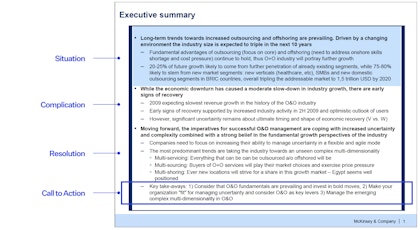
Apply these summary techniques in your Business Strategy template .
- Consultants typically communicate in a 'top down' or pyramid fashion, starting with the conclusion and then providing the supporting information.
- Write the most important takeaway of each section as the bolded text and follow with numbers and other supporting facts as bullet points.
- Read through the bolded text and see if the story makes sense.
- Spend the majority of the executive summary focusing on the solution/recommendation, rather than the situation and supporting analysis.
- The executive summary is not a play-by-play summary of a project. Instead, it is a decision document for your audience to understand the proposed solutions they have to decide on, and just enough information to set the solution in context and grasp the expected outcomes.
- Read through your executive summary and remove anything that is not directly relevant to deciding/agreeing with your proposed solution.
- Try to keep the executive summary as a single slide (sometimes two).
- Eliminate unnecessary words and sentences, and make sure that each sentence adds value to the overall message.
Creating executive summary slides like a McKinsey consultant can have a significant impact on the success of your communication and decision-making efforts. Although it seems simple and many people treat the executive summary like an after-thought, it should in fact be one of the slides you spend the most time on in any presentation.
A well-crafted executive summary helps you structure your entire presentation by making you focus on the solution you are proposing and only keeping in analyses and arguments that help explain the why, what, and how of that solution.
By following the essential components and strategies outlined above you can create a clear, concise, and compelling executive summary that effectively communicates complex ideas and drives action.
Cheat sheet
What is an executive summary exactly?
A short summary of the key messages and conclusions in a longer presentation, focused on actionable solutions or recommendations. In McKinsey and BCG consulting presentations the executive summary is typically one or two slides, but sometimes executive summary can also refer to a short deck.
What does an executive summary include and how do I write one?
See our 'How to' guide in this post.
Does an executive summary come before or after the table of contents?
Typically before the table of contents, as the first (or one of the first) slides after a title page.
Is there a good executive summary slide example?
Yes, you can download some examples from McKinsey and BCG here . You can also see full presentations from BCG and McKinsey here and here .
Or take a look at our full Business Strategy template or our Business Case template for real-life client examples.
Should I include visuals?
Generally McKinsey and BCG executive summaries do not include visuals, except perhaps icons to make the summary more visually appealing.
Download our most popular templates
High-end PowerPoint templates and toolkits created by ex-McKinsey, BCG, and Bain consultants
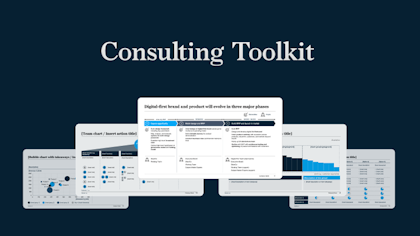
Consulting toolkit and template
A comprehensive library of slide layouts, templates, and typically consulting tools and frameworks.
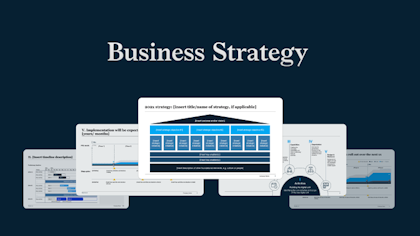
- Business Strategy
This template, created by ex-McKinsey and BCG consultants, includes everything you need to create a complete strategy.
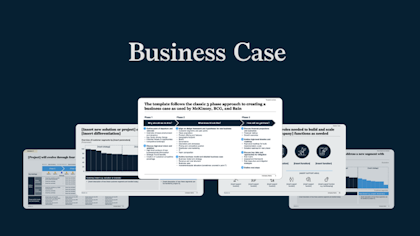
Create a full business case incl. strategy, roadmap, financials and more.
Related articles
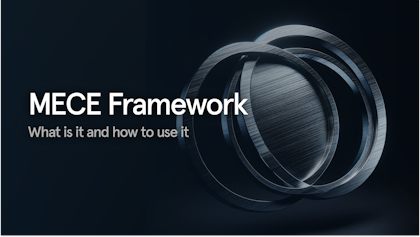
What is the MECE Framework – McKinsey Toolbox
In this post, we cover the MECE principle and how you can apply it to sharpen your thinking and simplify complex ideas into something that can easily be understood.
Dec 6, 2023
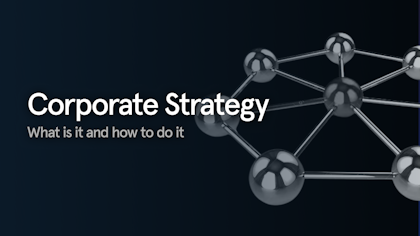
Corporate Strategy: What Is It and How To Do It (With Examples)
In this post, we'll cover corporate strategy as defined by BCG, McKinsey, and Bain. We'll go over what corporate strategy is, the key elements in defining a corporate strategy, examples of corporate strategies, and typical mistakes.
Nov 22, 2023

What are the Three Levels of Strategy in Organizations?
The three levels of strategy are corporate level strategy, business level strategy, and functional level strategy. In this article, we explain the differences and give you practical tips and tricks for each based on our experience at McKinsey, BCG, and Bain.
Nov 8, 2023

- Consulting Toolkit
- Market Analysis
- Market Entry Analysis
- Due Diligence Report
- Mergers & Acquisitions
- Digital Transformation
- Product Strategy
- Go-To-Market Strategy
- Operational Excellence I
- Operational Excellence II
- Operational Excellence III
- Consulting PowerPoint Templates
- How it works
- Terms & Conditions
- Privacy Policy
© 2023 Slideworks. All rights reserved
Denmark : Farvergade 10 4. 1463 Copenhagen K
US : 101 Avenue of the Americas, 9th Floor 10013, New York
Have a language expert improve your writing
Run a free plagiarism check in 10 minutes, generate accurate citations for free.
- Knowledge Base
- Working with sources
- How to Write a Summary | Guide & Examples
How to Write a Summary | Guide & Examples
Published on November 23, 2020 by Shona McCombes . Revised on May 31, 2023.
Summarizing , or writing a summary, means giving a concise overview of a text’s main points in your own words. A summary is always much shorter than the original text.
There are five key steps that can help you to write a summary:
- Read the text
- Break it down into sections
- Identify the key points in each section
- Write the summary
- Check the summary against the article
Writing a summary does not involve critiquing or evaluating the source . You should simply provide an accurate account of the most important information and ideas (without copying any text from the original).
Table of contents
When to write a summary, step 1: read the text, step 2: break the text down into sections, step 3: identify the key points in each section, step 4: write the summary, step 5: check the summary against the article, other interesting articles, frequently asked questions about summarizing.
There are many situations in which you might have to summarize an article or other source:
- As a stand-alone assignment to show you’ve understood the material
- To keep notes that will help you remember what you’ve read
- To give an overview of other researchers’ work in a literature review
When you’re writing an academic text like an essay , research paper , or dissertation , you’ll integrate sources in a variety of ways. You might use a brief quote to support your point, or paraphrase a few sentences or paragraphs.
But it’s often appropriate to summarize a whole article or chapter if it is especially relevant to your own research, or to provide an overview of a source before you analyze or critique it.
In any case, the goal of summarizing is to give your reader a clear understanding of the original source. Follow the five steps outlined below to write a good summary.
Prevent plagiarism. Run a free check.
You should read the article more than once to make sure you’ve thoroughly understood it. It’s often effective to read in three stages:
- Scan the article quickly to get a sense of its topic and overall shape.
- Read the article carefully, highlighting important points and taking notes as you read.
- Skim the article again to confirm you’ve understood the key points, and reread any particularly important or difficult passages.
There are some tricks you can use to identify the key points as you read:
- Start by reading the abstract . This already contains the author’s own summary of their work, and it tells you what to expect from the article.
- Pay attention to headings and subheadings . These should give you a good sense of what each part is about.
- Read the introduction and the conclusion together and compare them: What did the author set out to do, and what was the outcome?
To make the text more manageable and understand its sub-points, break it down into smaller sections.
If the text is a scientific paper that follows a standard empirical structure, it is probably already organized into clearly marked sections, usually including an introduction , methods , results , and discussion .
Other types of articles may not be explicitly divided into sections. But most articles and essays will be structured around a series of sub-points or themes.
Now it’s time go through each section and pick out its most important points. What does your reader need to know to understand the overall argument or conclusion of the article?
Keep in mind that a summary does not involve paraphrasing every single paragraph of the article. Your goal is to extract the essential points, leaving out anything that can be considered background information or supplementary detail.
In a scientific article, there are some easy questions you can ask to identify the key points in each part.
If the article takes a different form, you might have to think more carefully about what points are most important for the reader to understand its argument.
In that case, pay particular attention to the thesis statement —the central claim that the author wants us to accept, which usually appears in the introduction—and the topic sentences that signal the main idea of each paragraph.
The only proofreading tool specialized in correcting academic writing - try for free!
The academic proofreading tool has been trained on 1000s of academic texts and by native English editors. Making it the most accurate and reliable proofreading tool for students.

Try for free
Now that you know the key points that the article aims to communicate, you need to put them in your own words.
To avoid plagiarism and show you’ve understood the article, it’s essential to properly paraphrase the author’s ideas. Do not copy and paste parts of the article, not even just a sentence or two.
The best way to do this is to put the article aside and write out your own understanding of the author’s key points.
Examples of article summaries
Let’s take a look at an example. Below, we summarize this article , which scientifically investigates the old saying “an apple a day keeps the doctor away.”
Davis et al. (2015) set out to empirically test the popular saying “an apple a day keeps the doctor away.” Apples are often used to represent a healthy lifestyle, and research has shown their nutritional properties could be beneficial for various aspects of health. The authors’ unique approach is to take the saying literally and ask: do people who eat apples use healthcare services less frequently? If there is indeed such a relationship, they suggest, promoting apple consumption could help reduce healthcare costs.
The study used publicly available cross-sectional data from the National Health and Nutrition Examination Survey. Participants were categorized as either apple eaters or non-apple eaters based on their self-reported apple consumption in an average 24-hour period. They were also categorized as either avoiding or not avoiding the use of healthcare services in the past year. The data was statistically analyzed to test whether there was an association between apple consumption and several dependent variables: physician visits, hospital stays, use of mental health services, and use of prescription medication.
Although apple eaters were slightly more likely to have avoided physician visits, this relationship was not statistically significant after adjusting for various relevant factors. No association was found between apple consumption and hospital stays or mental health service use. However, apple eaters were found to be slightly more likely to have avoided using prescription medication. Based on these results, the authors conclude that an apple a day does not keep the doctor away, but it may keep the pharmacist away. They suggest that this finding could have implications for reducing healthcare costs, considering the high annual costs of prescription medication and the inexpensiveness of apples.
However, the authors also note several limitations of the study: most importantly, that apple eaters are likely to differ from non-apple eaters in ways that may have confounded the results (for example, apple eaters may be more likely to be health-conscious). To establish any causal relationship between apple consumption and avoidance of medication, they recommend experimental research.
An article summary like the above would be appropriate for a stand-alone summary assignment. However, you’ll often want to give an even more concise summary of an article.
For example, in a literature review or meta analysis you may want to briefly summarize this study as part of a wider discussion of various sources. In this case, we can boil our summary down even further to include only the most relevant information.
Using national survey data, Davis et al. (2015) tested the assertion that “an apple a day keeps the doctor away” and did not find statistically significant evidence to support this hypothesis. While people who consumed apples were slightly less likely to use prescription medications, the study was unable to demonstrate a causal relationship between these variables.
Citing the source you’re summarizing
When including a summary as part of a larger text, it’s essential to properly cite the source you’re summarizing. The exact format depends on your citation style , but it usually includes an in-text citation and a full reference at the end of your paper.
You can easily create your citations and references in APA or MLA using our free citation generators.
APA Citation Generator MLA Citation Generator
Finally, read through the article once more to ensure that:
- You’ve accurately represented the author’s work
- You haven’t missed any essential information
- The phrasing is not too similar to any sentences in the original.
If you’re summarizing many articles as part of your own work, it may be a good idea to use a plagiarism checker to double-check that your text is completely original and properly cited. Just be sure to use one that’s safe and reliable.
If you want to know more about ChatGPT, AI tools , citation , and plagiarism , make sure to check out some of our other articles with explanations and examples.
- ChatGPT vs human editor
- ChatGPT citations
- Is ChatGPT trustworthy?
- Using ChatGPT for your studies
- What is ChatGPT?
- Chicago style
- Paraphrasing
Plagiarism
- Types of plagiarism
- Self-plagiarism
- Avoiding plagiarism
- Academic integrity
- Consequences of plagiarism
- Common knowledge
A summary is a short overview of the main points of an article or other source, written entirely in your own words. Want to make your life super easy? Try our free text summarizer today!
A summary is always much shorter than the original text. The length of a summary can range from just a few sentences to several paragraphs; it depends on the length of the article you’re summarizing, and on the purpose of the summary.
You might have to write a summary of a source:
- As a stand-alone assignment to prove you understand the material
- For your own use, to keep notes on your reading
- To provide an overview of other researchers’ work in a literature review
- In a paper , to summarize or introduce a relevant study
To avoid plagiarism when summarizing an article or other source, follow these two rules:
- Write the summary entirely in your own words by paraphrasing the author’s ideas.
- Cite the source with an in-text citation and a full reference so your reader can easily find the original text.
An abstract concisely explains all the key points of an academic text such as a thesis , dissertation or journal article. It should summarize the whole text, not just introduce it.
An abstract is a type of summary , but summaries are also written elsewhere in academic writing . For example, you might summarize a source in a paper , in a literature review , or as a standalone assignment.
All can be done within seconds with our free text summarizer .
Cite this Scribbr article
If you want to cite this source, you can copy and paste the citation or click the “Cite this Scribbr article” button to automatically add the citation to our free Citation Generator.
McCombes, S. (2023, May 31). How to Write a Summary | Guide & Examples. Scribbr. Retrieved April 16, 2024, from https://www.scribbr.com/working-with-sources/how-to-summarize/
Is this article helpful?
Shona McCombes
Other students also liked, how to paraphrase | step-by-step guide & examples, how to quote | citing quotes in apa, mla & chicago, the basics of in-text citation | apa & mla examples, unlimited academic ai-proofreading.
✔ Document error-free in 5minutes ✔ Unlimited document corrections ✔ Specialized in correcting academic texts
Home Blog Presentation Ideas The Best Ways for Summarizing Business Presentations
The Best Ways for Summarizing Business Presentations
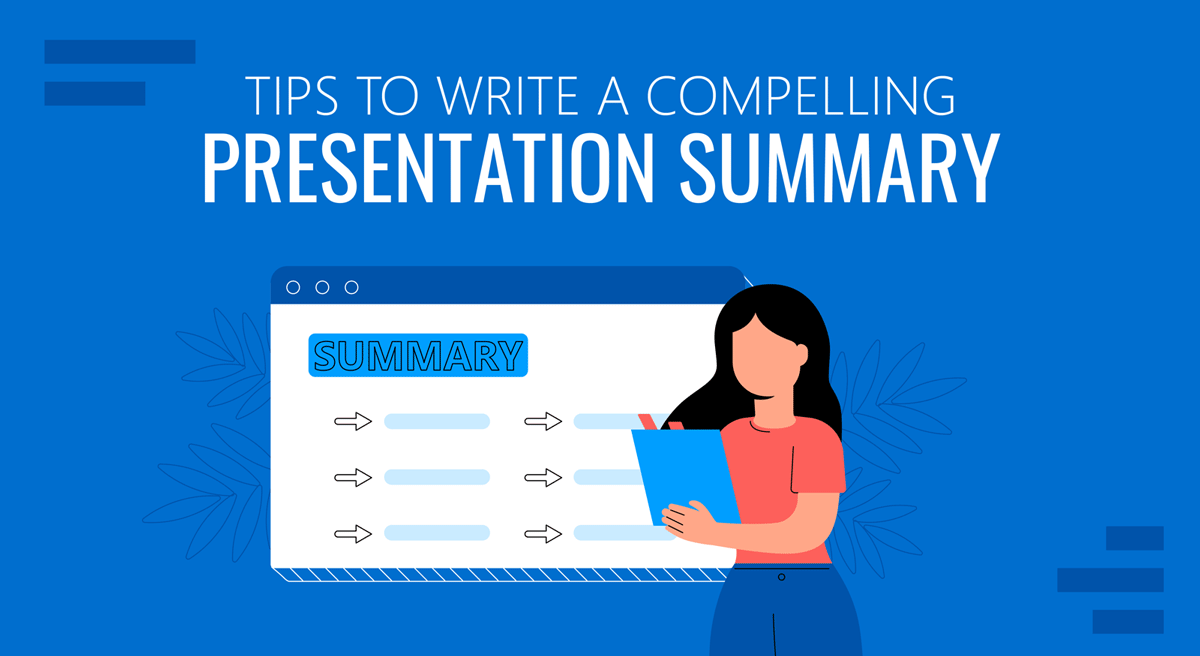
Two things are the easiest to lose when delivering business presentations. The first is the context, and the second follows very closely, to that, in the interest of your audience. The best way to avoid death by PowerPoint during a business presentation is to summarize your content smartly, in what we call a presentation summary . This article will explain some of the best ways to summarize business presentations using several methods.
Table of Contents
What is a Presentation Summary?
Why should you summarize business presentations, what should be included in the presentation summary, how to summarize business presentations, methods of summarizing different types of presentations, examples of presentation summary, final words.
A presentation summary is an essential part of a talk, providing a brief and clear overview of the main points and key takeaways for the audience. It condenses the speaker’s ideas and any critical conclusions or recommendations, so the audience can easily understand and remember the presentation.
You want to add a summary slide for your presentations for the following reasons:
- A presentation summary emphasizes the core message of a talk that you want your audience to take away.
- Presentation summaries provide clarity on complex information.
- A presentation summary allows you, the speaker, to refresh your audience’s memory and improve retention.
- Lastly, a presentation summary is a helpful reference for the audience to review the presentation’s key points.
Overall, a well-crafted presentation summary is a valuable tool for ensuring that the audience fully grasps and appreciates the presentation’s key messages.
Summarizing presentations, especially business presentations, can be a great way to connect with your audience by sticking to what matters and avoiding losing the translation context. Summarizing presentations can also have many other benefits that can really help you shine as a presenter and take off some of that public speaking anxiety. Below are a few reasons why you should summarize your business presentations.
To Make Content Easier to Explain
Every now and then, we see a presenter who likes to create text-heavy slides and a confusing monotone. Summarizing a presentation can help prevent some of these issues. While some people might have issues due to fear of public speaking, making things easier to explain can’t hurt your chances of delivering a presentation without alienating your audience.
To Make Content Easier to Follow
When a topic is too complex for an audience, it does not help to use jargon outside their area of expertise. This happens more often during business presentations than presenters tend to realize. For example, a presentation discussing a new production process might not be easy to understand for people from the finance or sales department. To make the presentation easy to follow for everyone, a diagram or summary of the process might be easier to explain.
Summarizing business presentations, be it in the form of bullet lists, highlighted keywords in small paragraphs, or focusing on visual aids, can be a great way to make your content easier to follow for your audience. To make your presentation have the required impact, such a summary might actually be necessary rather than an option. Otherwise, you may end up with death by PowerPoint.
To Avoid the Context from Getting Lost in Translation
It is arguably easier to follow a summarized version of the context rather than information that might be too much to handle for an audience. Something that many presenters can tend to forget is the attention span of the audience. Research suggests that the average audience attention span has greatly reduced over the past few years amidst a digitized world. A 2015 research by Microsoft highlighted how the audience could lose interest as quickly as 8 seconds. A second less than the goldfish! More recent research has produced similar results, blaming social media for declining attention spans.
Understanding the need to keep your audience interested can help a presenter summarize their slides to avoid losing the context. This is not necessarily linked only to attention spans, as presentations that are lengthy, dull, and lack stimulation can produce the same negative result. Therefore, it is necessary to summarize your context and keep your audience interested using eye-catching visuals, interactive presentation sessions, and at times, short breaks.
Here are the essential components of a good presentation summary.
1. Key Points of the Presentation
The purpose of a summary in a presentation is to reinforce the key message or messages you want your audience to take with them. Since this slide will serve as a quick reference to the main points of your talk, you want to condense the key points of your presentation into bullet points.
2. Call to Action
A call to action in the presentation summary can help solidify the main points and key takeaways of the presentation while also motivating the audience to take action. It is especially important if the goal of the presentation is to inspire change or promote a product or service. Without a clear call to action, the audience may forget about the presentation and not take any further steps.
If you’re presenting complex information, adding visual aids may help simplify your message to something your audience understands and remembers. Studies have shown that people remember and understand information better in visual formats such as graphs, charts, or images. You could even create a video summarizing the main points of your presentation in a visually captivating way.
4. Contact Details of the Presenter
Including your contact details in a presentation or summary has many benefits. It makes it easy for the audience to get in touch with you after the presentation and shows that you are willing to engage with them. It may help strengthen your brand.
Now that you know why let’s take a look at how to summarize business presentations in a manner that can help keep your audience interested. To create a presentation summary, you can:
Identify the Main Points of Your Presentation
The central idea of the presentation’s summary slide should be the key message or takeaway that the presenter wants the audience to remember. To identify the essential points of a presentation, you can ask yourself:
- What is the problem my presentation is trying to address?
- What is my goal in delivering the presentation?
- What insights do I want to leave my audience with?
By considering these questions and analyzing the presentation’s content, you can determine the central idea or main point you should highlight in the summary slide.
Create an Outline
It is best to start by collecting your thoughts and outlining what you intend to present. You can take notes and create a sequence that best suits your presentation context. This will also make it easy for you to make your presentation. Starting from the basics to the conclusion. You can use a tool like ChatGPT, which relies on generative AI technology , to create your summary too.
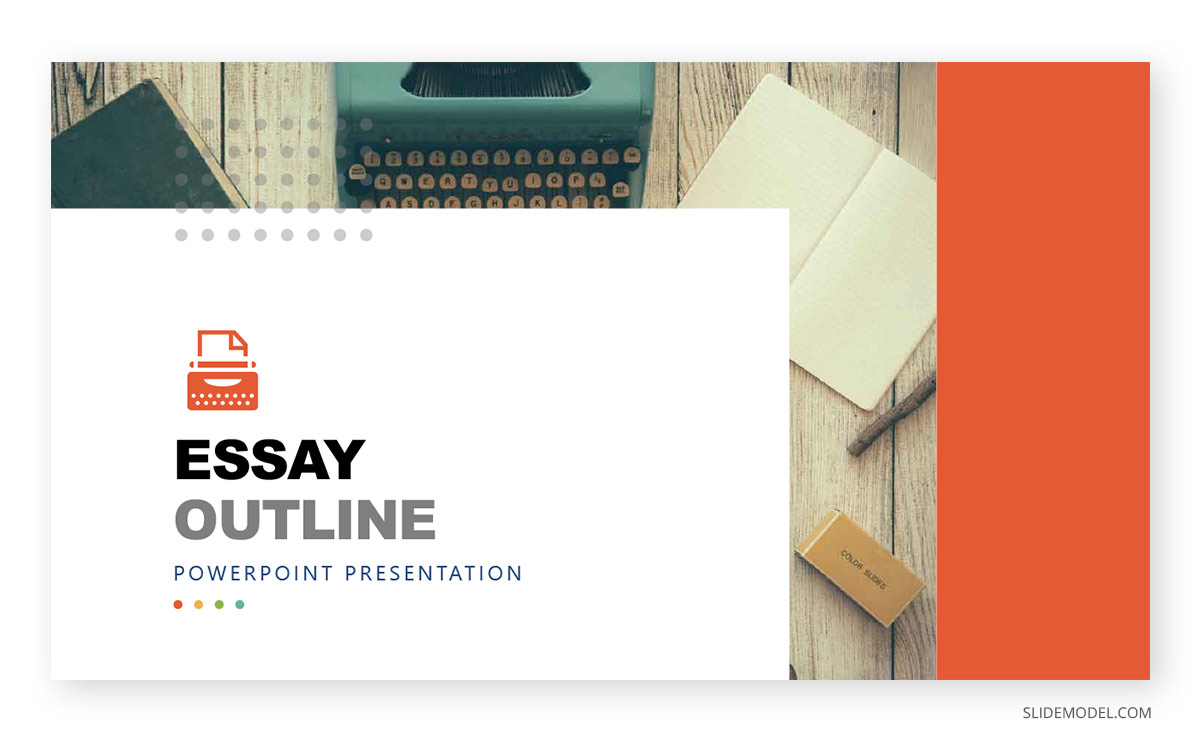
Use Key Highlights in Slides
If you are confused about what content to include in your presentation summary slides, you can pick the key highlights of your presentation. For example, when discussing a business forecast, you can discuss the key trends briefly in your slides. A chart, diagram, or table with basic information can help explain the context quickly and easily.
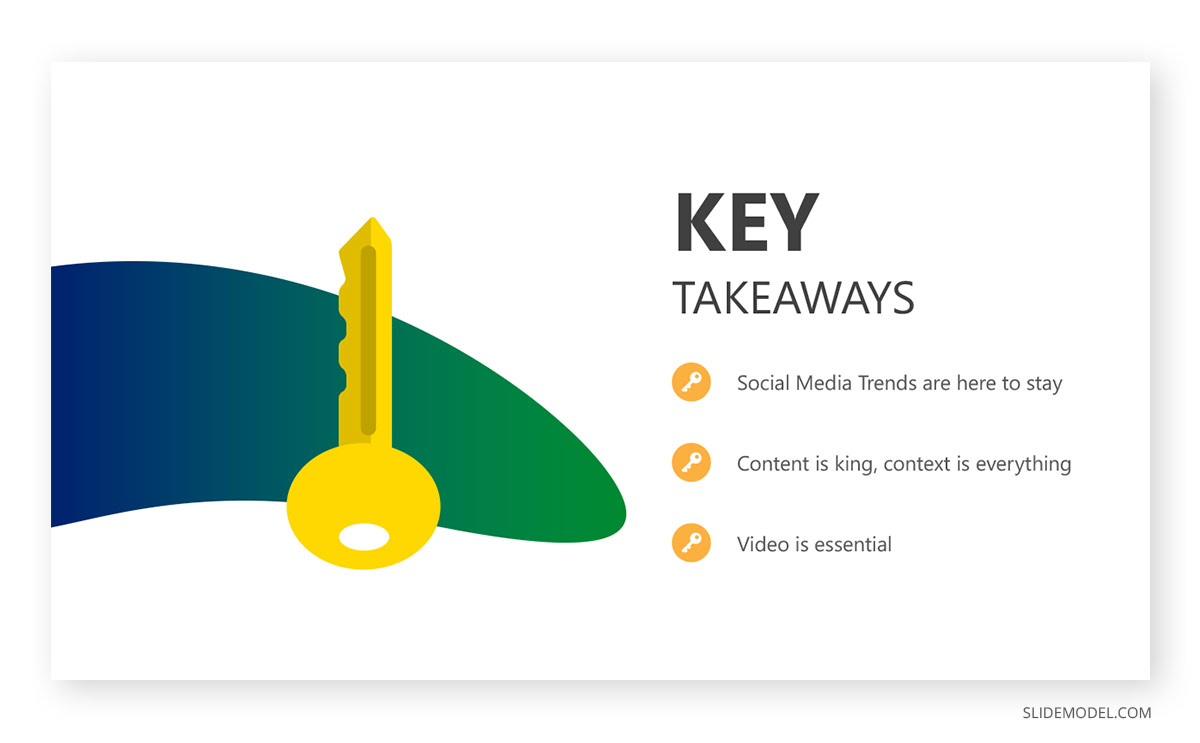
Emphasize Important Bits of Data, Trends & Analysis
There are some ways you can highlight key aspects of your slides. This can include bullet lists, diagrams, or using a different color for important bits of text. For the latter, you can highlight the names of areas, important financial figures, or other important keywords or phrases to make it easy to present and explain your context. Doing so can also help you quickly recall important information and focus on it, without the need to read your slide to remember where to discuss next.
Use Self-Explanatory Visuals
In economics, students are taught the fundamental concept of unlimited wants and limited resources, often by visualizations. You might see a sketch of a dragon about to eat the whole planet in his hands, with the dragon labeled as ‘wants’ and the planet labeled as ‘resources.’ Visuals like these can help explain complex ideas in a single image. Presenters can use similar visualizations with the help of visual slides or infographics . Not only can such images be downloaded from various websites offering stock images, but you can also use readymade PowerPoint templates to edit and create something similar by labeling infographics and diagram slides.
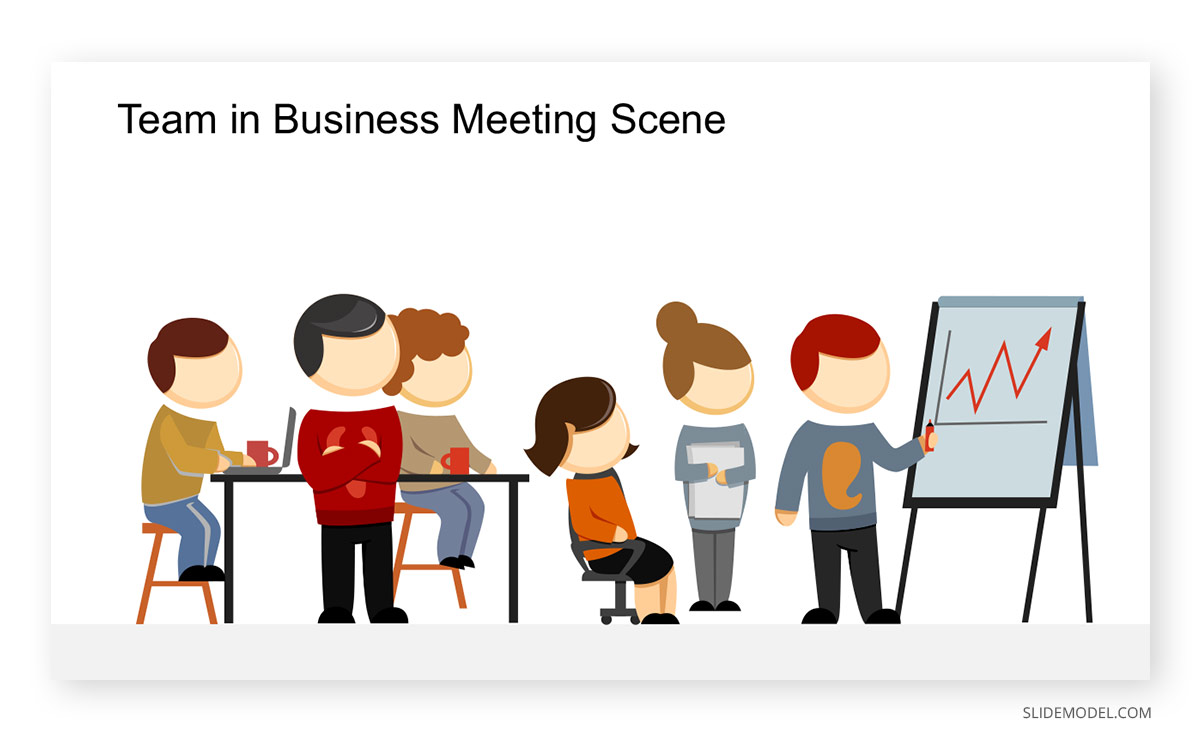
Use Appropriate Layouts that Support Your Content
A presentation discussing critical issues, losses, and failure can fall on deaf ears if the severity of the issue isn’t explained with a bit of emphasis. Not only does the presenter need to ensure this in his/her tone but also in visuals. Using layouts with colors in red or graphics indicating danger or loss can be a way to edge the message in your audience’s minds visually. Similarly, when discussing rosy prospects, a layout that gives calming visuals can be effective.
Many presentations related to improving the environment and reducing pollution use green layouts to encourage the audience to adopt something visually depicted as desirable and healthy. Similarly, presentations about vacations and tourism often have visuals of sandy beaches, water bodies, and people having fun. The use of relevant visuals and layouts can help support your context without saying too much.
Use Speaker Notes to Support Your Presentation
If you’re worried about losing sight of important information without cramming text in your slides, you can use speaker notes. These are hidden notes that the presenter can see when presenting their presentation. You can learn more about using this feature from our guide about using and printing speaker notes in PowerPoint .
There are a number of methods to cut down on text to summarize your slides. Different types of presentations might need various techniques to do this effectively. Here are a few suggestions to help you summarize different types of presentations using various methods.
Dashboards for Data-driven Presentations
A little-known gem for presenters is the use of Dashboard slides. With Dashboard PowerPoint Templates , you can design data-driven presentations by adding various bits of information in a single slide. This might include tables, charts, diagrams, and clipart in a single slide, divided into various sections.
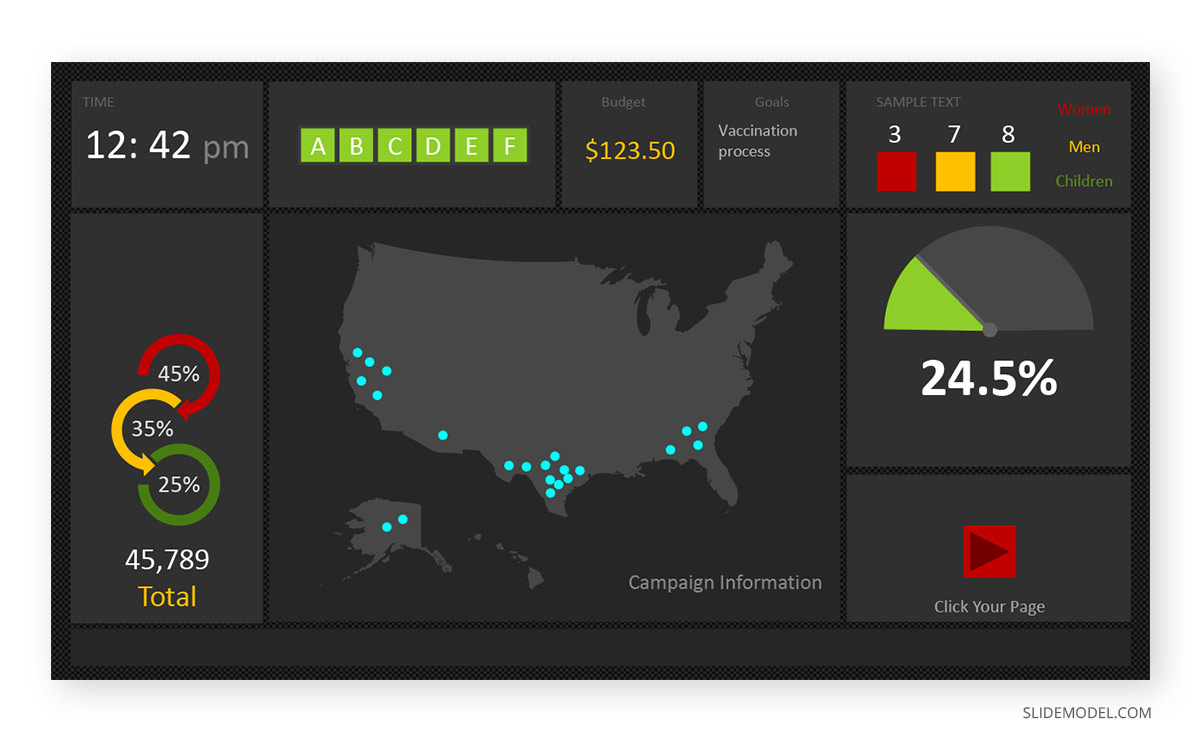
Quizzes for Informative Presentations
Making your context memorable for an audience can be easier by using interactive sessions. If you’re a teacher, trainer, coach, or giving a product demo, looking to help your audience remember important parts of information, you can use quizzes. The use of quizzes can also help keep your audience attentive and make the session fun for them.
Infographics for Depicting Trends and Complex Data
Infographics can help sum up complex information with visual aids. A diagram about user preferences over the past decade in the form of stats might seem boring. However, the same presentation summed up using infographics can help explain the trends easily. For this purpose, a PowerPoint Template with Infographics can be a great way of quickly designing slides with relevant information.
Timelines and Roadmaps
Timelines and roadmaps are often used to discuss project progress, historical context, and forecasts. Using them can be a good way to summarize lengthy details in the form of a few milestones, dates, and labels.
Business Diagrams that can Help Summarize your Slides.
Business diagrams can be another tool to summarize your presentation. Be it a SWOT or PESTEL analysis, sales funnel, or other business diagrams, you can easily incorporate the entire analysis or discussion using a single visualization.
Making Content Memorable
In a previous article about presentation tips , we mentioned the rule of three. This is an age-old rule implying that anything used three times is ‘perfect’ or memorable. You can use this rule by mentioning key highlights at the start, the middle, and the end of your presentation. Such as perhaps something that triggers a call to action. Similarly, you can repeat a word or phrase three times to make it memorable for your audience. Other techniques that you can use include the use of Rhetorical Triangle and the Zeigarnik Effect .
Sales Summary
Here’s an example of a basic presentation summary for sales, which discusses the sales performance of a diet food manufacturer.
The important figures are highlighted using a graph, which clearly shows the company’s sales trends within a year. Below the graph are the conclusions or the key contributing factors to the success.
The speaker also acknowledged the audience (the employees and stakeholders) and left them with a call to action by encouraging them to innovate more.
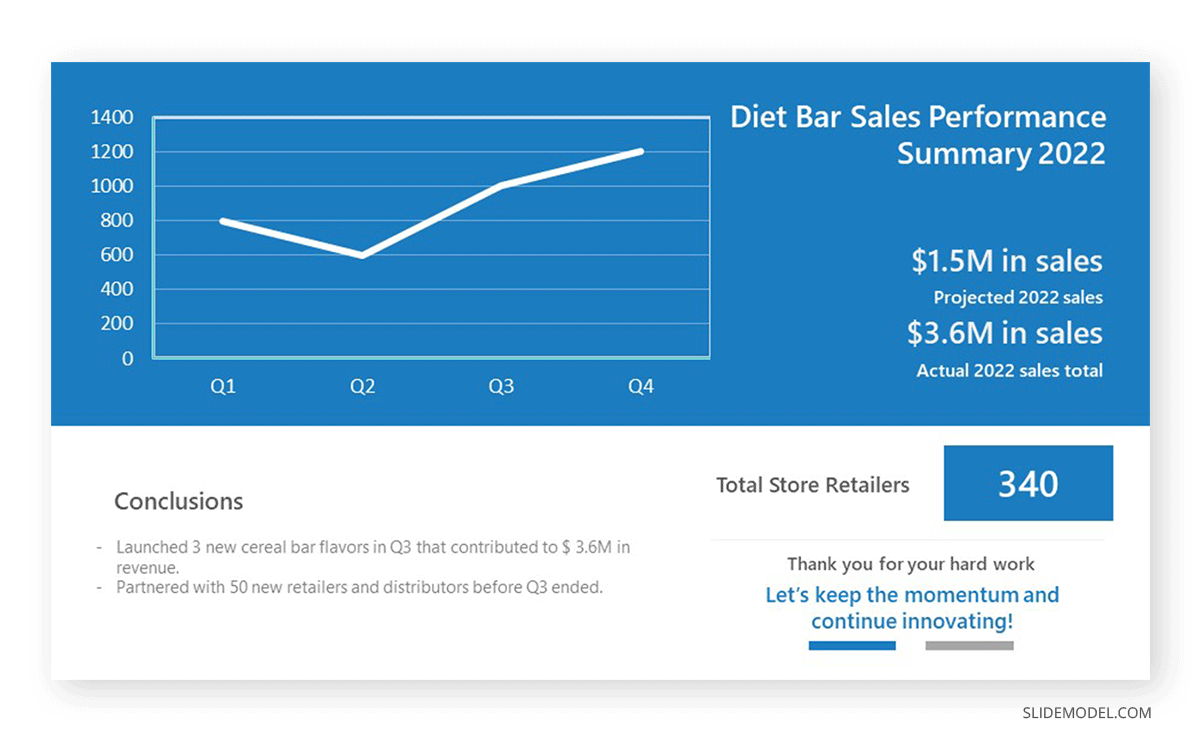
Customer Journey Summary
Here’s an example of a customer journey summary for presentations. The horizontal map presents each stage of the customer journey, allowing the audience to quickly grasp the overall flow of the service experience.
The conclusions, on the other hand, highlight the critical lessons from the customer journey example. They provide actionable insights for optimizing processes from marketing to product delivery.
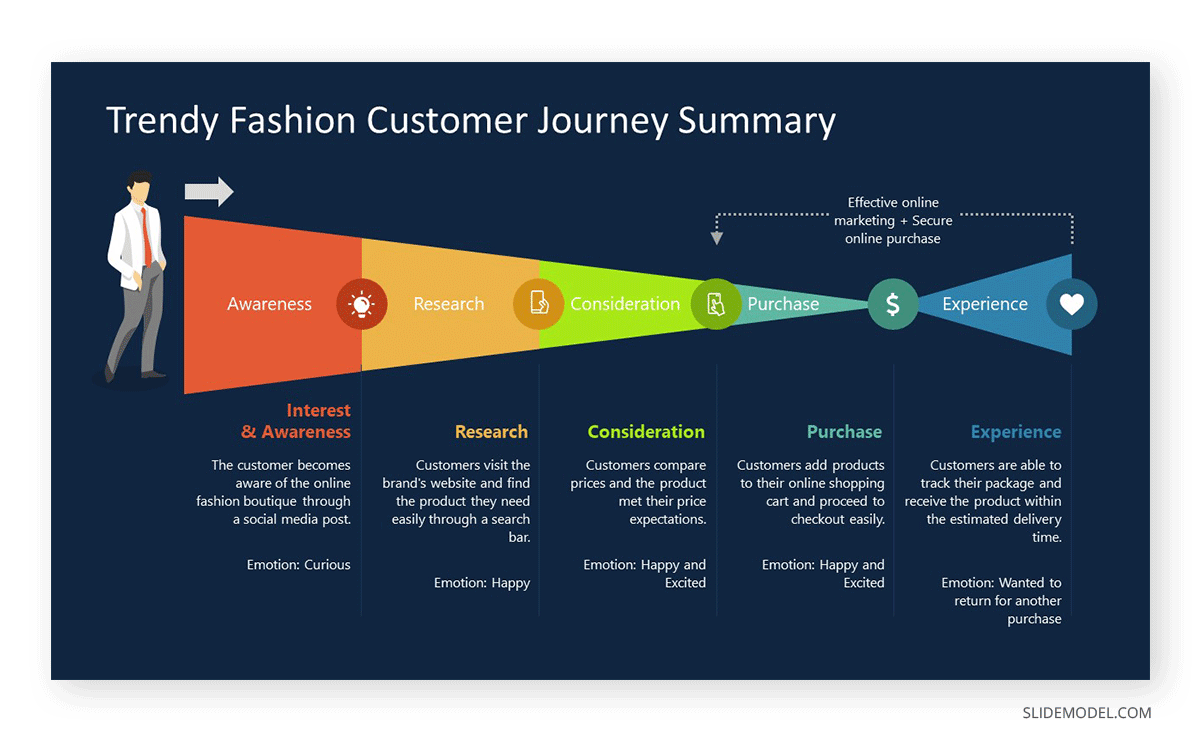
Business Proposal Summary
Here’s an example of a summary slide for a business proposal presentation . It encapsulates the prospect’s pain points with visualizations to create urgency.
The presenters’ implementation plan quickly follows, outlining key strategies and activities to be undertaken. There are also quantifiable expected results, which add credibility to the proposal.
The summary slide ends with a polite encouragement for further discussions, leaving the prospect with the specific contact person.
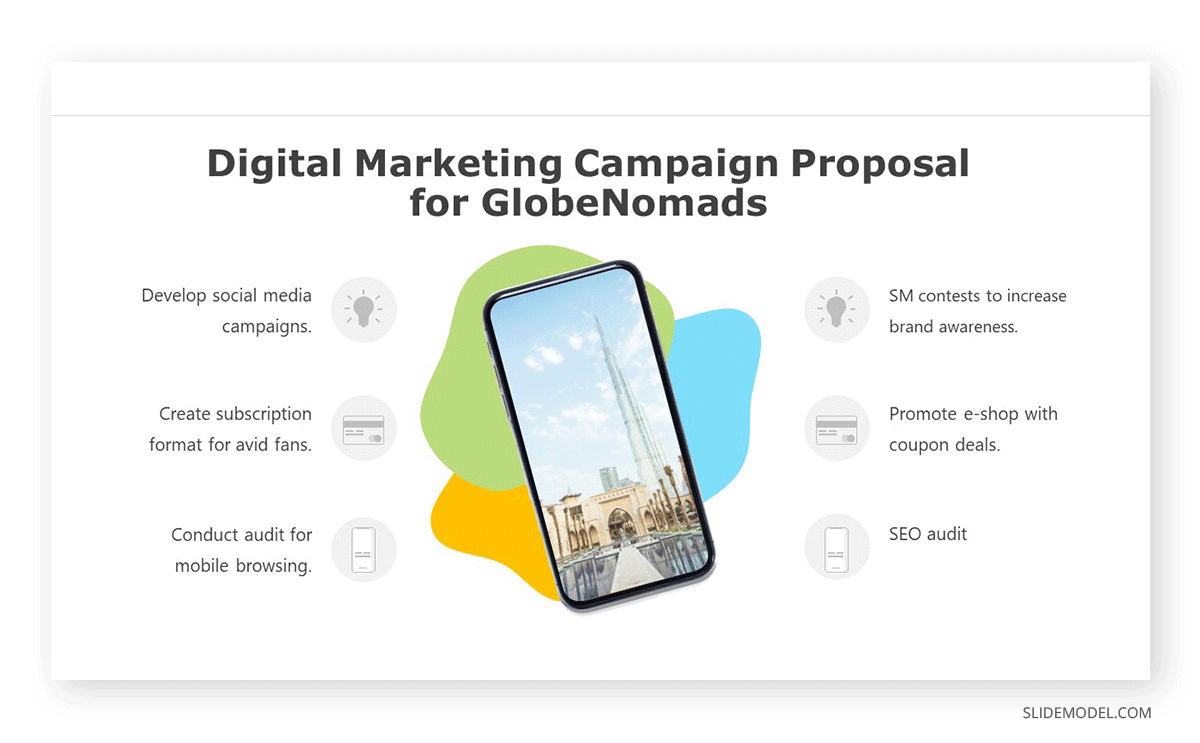
Project Launch Summary
This slide shows what a project/product launch summary looks like. Using a simple three steps diagram, it maps out the timeline of the website development project. The summary slide includes the project’s key milestones — from its early stage and project launch date down to the evaluation — giving the audience a quick reference of the entire process.
Including the project goal sets a clear expectation for the stakeholders and encourages them to explore opportunities for the future.
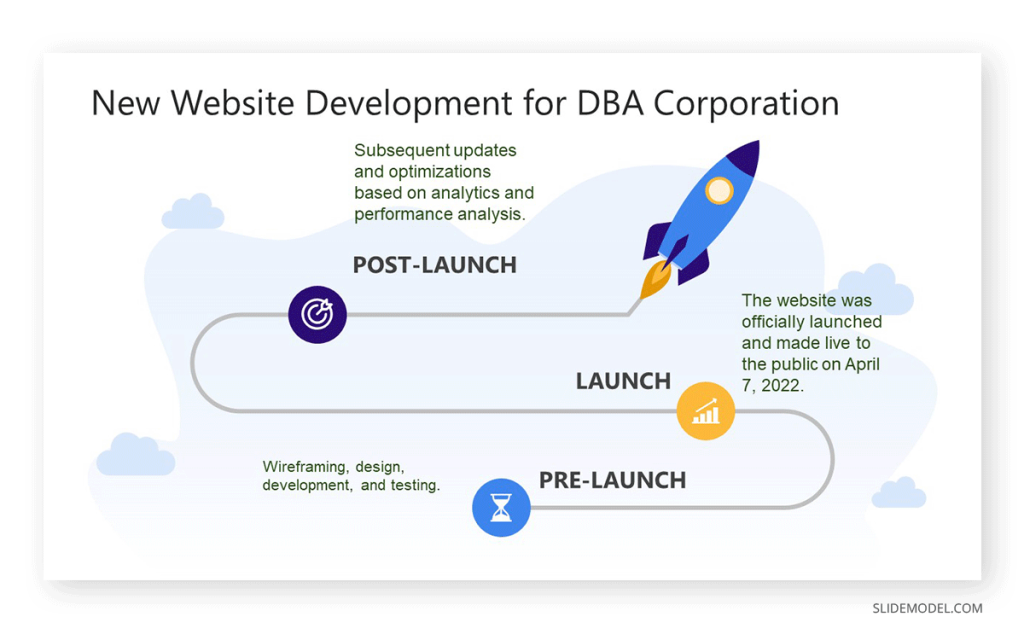
When summarizing presentations, it’s good to consider what questions to raise or what pattern to follow to make your presentation sequential and memorable. You can look at the potential good questions to ask, and paraphrase to summarize content while using relevant visualizations and layouts. Whether you’re someone afraid of public speaking or an experienced presenter, knowing that your presentations are brief and to the point can give you a sense of calm. It can also help boost your confidence as you look to grab the valuable attention of your audience while keeping them awake amidst short attention spans and critical details tied to what you are presenting.
1. Key Takeaways Concept Slides for PowerPoint
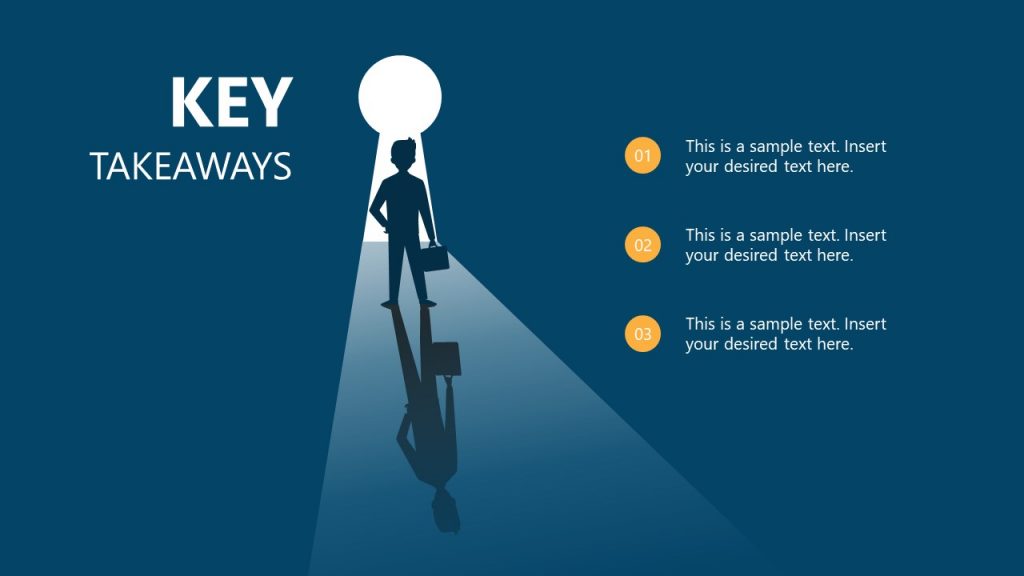
Use this eye-catching template to summarize the key takeaways from your PowerPoint Presentation.
Use This Template
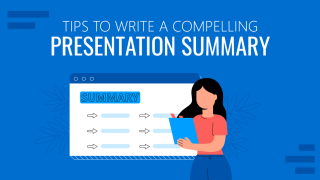
Like this article? Please share
Business Presentations, Microsoft PowerPoint, Presentation Ideas, Presentation Tips, Presentations Filed under Presentation Ideas
Related Articles
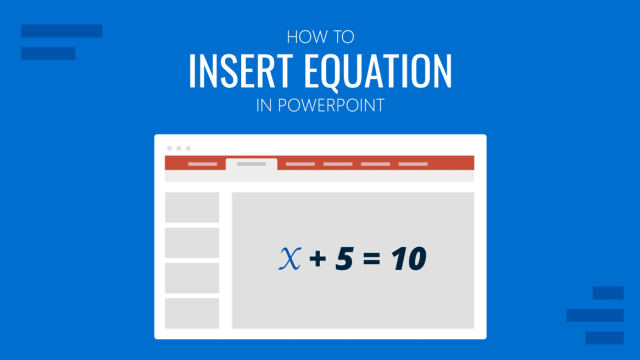
Filed under PowerPoint Tutorials • April 16th, 2024
How to Insert an Equation in PowerPoint
Learn how to create easy-to-understand science slides by mastering how to insert an equation in PowerPoint. Step-by-step guide.

Filed under Business • April 10th, 2024
Discovering Coaching Presentation Tools
Discover the best PPT templates to use as coaching presentation tools with this article. Tools explained + examples.
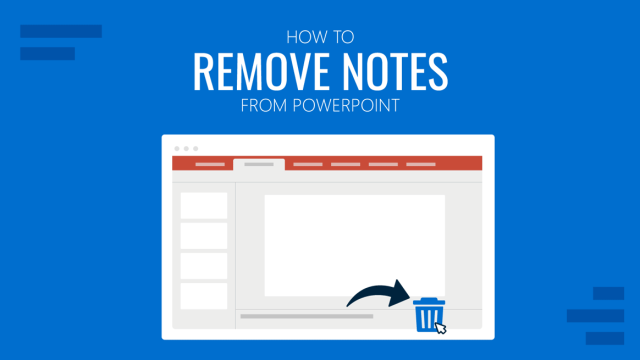
Filed under PowerPoint Tutorials • April 9th, 2024
How to Remove Notes from PowerPoint
Make alternative versions of your presentation files by learning how to remove notes from PowerPoint. Step-by-step guide with screeshots.
Leave a Reply
How to Write an Executive Summary and Translate It Into a Presentation

An executive summary is a crucial document that summarizes the essence of a business proposal, plan, or project. It is the first thing an investor, partner, or executive reads to determine if a project is worth investing in. Because they’re looking for high level updates, it should be concise, clear, and convincing.
It’s one thing to write a killer executive summary and another to translate it into a presentation that keeps your audience engaged and interested. In a presentation, an executive summary is usually a “too long, didn’t read” slide at the end of the deck (although it can be an entire presentation, too). If your summary is effective, executives should be able to pick up the key takeaways from the presentation in just a few points.
In this blog post, we'll explore the key elements of a winning executive summary and how you can include it in your deck.
How to write an effective executive summary
If an executive summary is foreign to you, let’s start with how to write one. Keep these 3 things in mind when writing your next executive summary.
Understand your audience
The first step to crafting an effective executive summary is to understand your audience. Who are they? What are their interests, goals, and challenges? Pinpointing what they care about most, and answering those questions, will help you tailor your summary to their needs. If you're presenting to investors, for example, you'll want to highlight the financial benefits of your proposal. Similarly, if you're presenting to executives, you'll want to focus on the strategic implications.
Focus on the biggest wins
Your executive summary should highlight the biggest wins or benefits of your proposal or project. Think of it as a high level overview— or sparknotes— of your story. What's in it for your audience? What problem does it solve, or what opportunity does it create? Highlight these wins upfront and organize them in a logical and compelling way. You might opt for bullet points, graphics, or charts to emphasize key points and make them easier to digest.
Keep it simple and clear
A good executive summary should be concise and easy to understand. After all, the whole point is to summarize your content. To keep things simple, avoid jargon, technical terms, or complex charts that may confuse your audience. Remember, your goal is to communicate effectively and get to the point quickly, not to impress your audience with your vocabulary.
Adding an executive summary to your presentation
Now that you know the basics of how to write an executive summary, let’s add it to your presentation.
As we mentioned, you should limit your executive summary to one slide and only include the most important and meaningful information. Usually, this slide will live at the end of the deck so your audience can refer back to it for a quick recap of the presentation when they need to make a decision.
Tell a compelling story
Imagine your audience skimmed through the entire deck and is relying on the last slide to tell them exactly what they need to know— will it make sense? Even though an executive summary is short and sweet, it should still maintain a nice flow.
People love stories, so use that to your advantage. Compile your key takeaways in a compelling story that captures the essence of your proposal or project. Use anecdotes, examples, or data that demonstrate its value and impact. You might also include one or two visuals, or videos, that bring your story to life and grab the attention of your audience.
Practice and prepare
As with any presentation, practice makes perfect. But chances are, if you’re including an executive summary, you’re presenting to a powerful audience and the stakes are high. Take the time to rehearse your presentation in front of a mirror or a friend to eliminate any kinks. Pay attention to your body language, tone of voice, and timing.
You’ll also want to ensure your presentation is well-organized, and your visuals or videos are working correctly. Lastly, be prepared to answer questions or objections and have backup data or evidence to support your claims in your executive summary.

Jordan Turner
Jordan is a Bay Area writer, social media manager, and content strategist.
Recommended Articles
Sales pitch training: how to build pitch templates that will power up your junior sales team, tedxtalker bobby umar's 5 popular public speaking mistakes to learn from, stand out from the crowd with presentations with clean, modern designs , tips for giving your first pechakucha presentation.

How To Write A Presentation 101 | Step-by-Step Guides with Best Examples | 2024 Reveals
Jane Ng • 05 Apr 2024 • 8 min read
Is it difficult to start of presentation? You’re standing before a room full of eager listeners, ready to share your knowledge and captivate their attention. But where do you begin? How do you structure your ideas and convey them effectively?
Take a deep breath, and fear not! In this article, we’ll provide a road map on how to write a presentation covering everything from crafting a script to creating an engaging introduction.
So, let’s dive in!
Table of Contents
What is a presentation , what should be in a powerful presentation.
- How To Write A Presentation Script
- How to Write A Presentation Introduction
Key Takeaways
Tips for better presentation.
- How to start a presentation
- How to introduce yourself

Start in seconds.
Get free templates for your next interactive presentation. Sign up for free and take what you want from the template library!
Presentations are all about connecting with your audience.
Presenting is a fantastic way to share information, ideas, or arguments with your audience. Think of it as a structured approach to effectively convey your message. And you’ve got options such as slideshows, speeches, demos, videos, and even multimedia presentations!
The purpose of a presentation can vary depending on the situation and what the presenter wants to achieve.
- In the business world, presentations are commonly used to pitch proposals, share reports, or make sales pitches.
- In educational settings, presentations are a go-to for teaching or delivering engaging lectures.
- For conferences, seminars, and public events—presentations are perfect for dishing out information, inspiring folks, or even persuading the audience.
That sounds brilliant. But, how to write a presentation?

How To Write A Presentation? What should be in a powerful presentation? A great presentation encompasses several key elements to captivate your audience and effectively convey your message. Here’s what you should consider including in a winning presentation:
- Clear and Engaging Introduction: Start your presentation with a bang! Hook your audience’s attention right from the beginning by using a captivating story, a surprising fact, a thought-provoking question, or a powerful quote. Clearly state the purpose of your presentation and establish a connection with your listeners.
- Well-Structured Content: Organize your content logically and coherently. Divide your presentation into sections or main points and provide smooth transitions between them. Each section should flow seamlessly into the next, creating a cohesive narrative. Use clear headings and subheadings to guide your audience through the presentation.
- Compelling Visuals: Incorporate visual aids, such as images, graphs, or videos, to enhance your presentation. Make sure your visuals are visually appealing, relevant, and easy to understand. Use a clean and uncluttered design with legible fonts and appropriate color schemes.
- Engaging Delivery: Pay attention to your delivery style and body language. You should maintain eye contact with your audience, use gestures to emphasize key points, and vary your tone of voice to keep the presentation dynamic.
- Clear and Memorable Conclusion: Leave your audience with a lasting impression by providing a strong closing statement, a call to action, or a thought-provoking question. Make sure your conclusion ties back to your introduction and reinforces the core message of your presentation.

How To Write A Presentation Script (With Examples)
To successfully convey your message to your audience, you must carefully craft and organize your presentation script. Here are steps on how to write a presentation script:
1/ Understand Your Purpose and Audience
- Clarify the purpose of your presentation. Are you informing, persuading, or entertaining?
- Identify your target audience and their knowledge level, interests, and expectations.
- Define what presentation format you want to use
2/ Outline the Structure of Your Presentation
Strong opening.
Start with an engaging opening that grabs the audience’s attention and introduces your topic. Some types of openings you can use are:
- Start with a Thought-Provoking Question: “Have you ever…?”
- Begin with a Surprising Fact or Statistic: “Did you know that….?”
- Use a Powerful Quote: “As Maya Angelou once said,….”
- Tell a Compelling Story : “Picture this: You’re standing at….”
- Start with a Bold Statement: “In the fast-paced digital age….”
Main Points
Clearly state your main points or key ideas that you will discuss throughout the presentation.
- Clearly State the Purpose and Main Points: Example: “In this presentation, we will delve into three key areas. First,… Next,… Finally,…. we’ll discuss….”
- Provide Background and Context: Example: “Before we dive into the details, let’s understand the basics of…..”
- Present Supporting Information and Examples: Example: “To illustrate…., let’s look at an example. In,…..”
- Address Counterarguments or Potential Concerns: Example: “While…, we must also consider… .”
- Recap Key Points and Transition to the Next Section: Example: “To summarize, we’ve… Now, let’s shift our focus to…”
Remember to organize your content logically and coherently, ensuring smooth transitions between sections.
You can conclude with a strong closing statement summarizing your main points and leaving a lasting impression. Example: “As we conclude our presentation, it’s clear that… By…., we can….”
3/ Craft Clear and Concise Sentences
Once you’ve outlined your presentation, you need to edit your sentences. Use clear and straightforward language to ensure your message is easily understood.
Alternatively, you can break down complex ideas into simpler concepts and provide clear explanations or examples to aid comprehension.
4/ Use Visual Aids and Supporting Materials
Use supporting materials such as statistics, research findings, or real-life examples to back up your points and make them more compelling.
- Example: “As you can see from this graph,… This demonstrates….”
5/ Include Engagement Techniques
Incorporate interactive elements to engage your audience, such as Q&A sessions , conducting live polls, or encouraging participation. You can also spin more funs into group, by randomly dividing people into different groups to get more diverse feedbacks!
6/ Rehearse and Revise
- Practice delivering your presentation script to familiarize yourself with the content and improve your delivery.
- Revise and edit your script as needed, removing any unnecessary information or repetitions.
7/ Seek Feedback
You can share your script or deliver a practice presentation to a trusted friend, colleague, or mentor to gather feedback on your script and make adjustments accordingly.
More on Script Presentation

How to Write A Presentation Introduction with Examples
How to write presentations that are engaging and visually appealing? Looking for introduction ideas for the presentation? As mentioned earlier, once you have completed your script, it’s crucial to focus on editing and refining the most critical element—the opening of your presentation – the section that determines whether you can captivate and retain your audience’s attention right from the start.
Here is a guide on how to craft an opening that grabs your audience’s attention from the very first minute:
1/ Start with a Hook
To begin, you can choose from five different openings mentioned in the script based on your desired purpose and content. Alternatively, you can opt for the approach that resonates with you the most, and instills your confidence. Remember, the key is to choose a starting point that aligns with your objectives and allows you to deliver your message effectively.
2/ Establish Relevance and Context
Then you should establish the topic of your presentation and explain why it is important or relevant to your audience. Connect the topic to their interests, challenges, or aspirations to create a sense of relevance.
3/ State the Purpose
Clearly articulate the purpose or goal of your presentation. Let the audience know what they can expect to gain or achieve by listening to your presentation.
4/ Preview Your Main Points
Give a brief overview of the main points or sections you will cover in your presentation. It helps the audience understand the structure and flow of your presentation and creates anticipation.
5/ Establish Credibility
Share your expertise or credentials related to the topic to build trust with the audience, such as a brief personal story, relevant experience, or mentioning your professional background.
6/ Engage Emotionally
Connect emotional levels with your audience by appealing to their aspirations, fears, desires, or values. They help create a deeper connection and engagement from the very beginning.
Make sure your introduction is concise and to the point. Avoid unnecessary details or lengthy explanations. Aim for clarity and brevity to maintain the audience’s attention.
For example, Topic: Work-life balance
“Good morning, everyone! Can you imagine waking up each day feeling energized and ready to conquer both your personal and professional pursuits? Well, that’s exactly what we’ll explore today – the wonderful world of work-life balance. In a fast-paced society where work seems to consume every waking hour, it’s vital to find that spot where our careers and personal lives harmoniously coexist. Throughout this presentation, we’ll dive into practical strategies that help us achieve that coveted balance, boost productivity, and nurture our overall well-being.
But before we dive in, let me share a bit about my journey. As a working professional and a passionate advocate for work-life balance, I have spent years researching and implementing strategies that have transformed my own life. I am excited to share my knowledge and experiences with all of you today, with the hope of inspiring positive change and creating a more fulfilling work-life balance for everyone in this room. So, let’s get started!”
🎉 Check out: How to Start a Presentation?

Whether you’re a seasoned speaker or new to the stage, understanding how to write a presentation that conveys your message effectively is a valuable skill. By following the steps in this guide, you can become a captivating presenter and make your mark in every presentation you deliver.
Additionally, AhaSlides can significantly enhance your presentation’s impact. With AhaSlides, you can use live polls , quizzes , and word cloud to turn your presentation into an engaging and interactive experience. Let’s take a moment to explore our vast template library !
Frequently Asked Questions
How to write a presentation step by step .
You can refer to our step-by-step guide on How To Write A Presentation Script: Understand Your Purpose and Audience Outline the Structure of Your Presentation Craft Clear and Concise Sentences Use Visual Aids and Supporting Material Include Engagement Techniques Rehearse and Revise Seek Feedback
How do you start a presentation?
You can start with an engaging opening that grabs the audience’s attention and introduces your topic. Consider using one of the following approaches: Start with a Thought-Provoking Question: “Have you ever…?” Begin with a Surprising Fact or Statistic: “Did you know that….?” Use a Powerful Quote: “As Maya Angelou once said,….” Tell a Compelling Story : “Picture this: You’re standing at….” Start with a Bold Statement: “In the fast-paced digital age….”
What are the five parts of a presentation?
When it comes to presentation writing, a typical presentation consists of the following five parts: Introduction: Capturing the audience’s attention, introducing yourself, stating the purpose, and providing an overview. Main Body: Presenting main points, evidence, examples, and arguments. Visual Aids: Using visuals to enhance understanding and engage the audience. Conclusion: Summarizing main points, restating key message, and leaving a memorable takeaway or call to action. Q&A or Discussion: Optional part for addressing questions and encouraging audience participation.

A writer who wants to create practical and valuable content for the audience
More from AhaSlides


- High-impact business writing
- Effective email writing
- Bid, tender and sales-proposal writing
- Technical writing
- Writing for customer service

- Customer-service writing
- Effective report writing

Business writing essentials
How to write a presentation (and deliver it, even via Zoom)
Jack elliott.
31 minute read

You’ve been asked to give a presentation. Chances are, your response will be roughly one of the following:
1. It’s a subject you’re passionate about and you’re a confident speaker. You’re pleased to have the opportunity.
2. You secretly worry that your style is flat and unengaging. You’re not looking forward to it.
3. At best, the prospect makes you nervous; at worst, terrified. You’d rather have root canal surgery.
If you belong in one of the last two categories, you probably know you’re not alone. You may have heard the statistic that public speaking is more widely feared even than death .

However you feel about the prospect of presenting, this comprehensive guide will take you step by step through the process of planning, writing and delivering a presentation you can be proud of (even via Zoom).
Use the contents links below to jump to the section you need most, make your way through methodically from start to finish, or bookmark this page for next time you need it.
What is a presentation?
Essentially, it’s a story. And its origins go back thousands of years – to when our ancestors gathered around the campfire to listen to the wise elders of the tribe. Without PowerPoint!
These days, presentations encompass the glitz and scale of the Oscars or the new iPhone launch through to business briefings to smaller audiences, in person or – increasingly – online. We’re focusing on the business side.
Whatever the occasion, there’s always an element of drama involved. A presentation is not a report you can read at your leisure, it’s an event – speakers are putting themselves on the spot to explain, persuade or inspire you. Good presentations use this dynamic to support their story.
Always remember: everyone wants you to do well
If you are nervous, always remember: no one sets out to write a poor presentation and no one wants to go to one either. There may be private agendas in the room, but for the most part audiences approach presentations positively. They want to be engaged and to learn. They want you to do well.
First things first: the date’s in the diary and you need to prepare. Let’s break it down.

1. Preparing your presentation
Imagine you’re a designer in the automotive industry and your boss has asked you to give a presentation. The subject: the future of the car and how it will fit with all the other modes of transport.
Where to start? How to approach it? First you need an angle, a key idea.
We talk about ‘giving’ a presentation – and of course it’s the audience who will be receiving it. So, instead of beginning with cars (in this case), let’s think about people. That way we can root the talk in the everyday experience we all share.
Maybe you remember a time you were stuck in traffic on a motorway. Morning rush hour. No one moving. Up ahead children were crossing a footbridge on their way to school, laughing at the cars going nowhere. And you thought, ‘Enjoy it while you can! This will be you one day.’ But maybe not. Surely we can do better for future generations!
There’s your opening – the whole issue captured in a single image, and you’ve immediately engaged your audience with a simple story.
The who, the why and the what
Always begin with the people you’ll be addressing in mind. Before you start writing, answer three fundamental questions: who is your audience, why are you talking to them and what do you want to say?
The answers will provide the strong foundations you need and start the ideas flowing. Ignore them and you risk being vague and unfocused. Clear writing is the result of clear thinking and thinking takes time, but it’s time well spent.
Got a presentation to write? Before you do anything else, answer three fundamental questions: who is your audience, why are you talking to them and what do you want to say? @EmphasisWriting Click To Tweet
Start with the audience
Are you a senior car designer talking to your team? If the answer’s yes, you can assume high-level, shared knowledge.
But if you’re talking to the sales or marketing departments, you can’t make the same assumptions – there are issues you might have to explain and justify. And if it’s a press briefing, it’s about getting the message out to the general public – a different story again.
Knowing your audience will also dictate your tone. Your presentation to the board is likely to be quite formal, whereas a talk for your team can be more relaxed.
And what’s the audience’s mood? On another occasion you might have bad news to deliver – perhaps the national economy and the company’s finances are threatening people’s jobs. Then you must empathise – put yourself in their position and adapt your tone accordingly.

I want to …
You also need a clear objective (the why ). For our car designer, the overriding objective should be to plant a key idea in the audience’s mind. Starting with that image of the schoolchildren, it’s to convince the audience that the company has a radical and distinctive design future.
That’s the takeaway. How should they do that? Should they explain, persuade or inspire – the three key strategies for any presentation? You may need to use several of them to achieve your goal.
Objectives should always complete the statement ‘I want to …’. What do you want to do ?
It’s about …
The what is the substance of your presentation – the building blocks, all the facts and figures that tell the audience ‘It’s about …’.
Back to our designer. The move away from petrol and diesel will allow a complete rethink of car design. The electric power unit and battery can lie under the car’s floor, freeing up all the space taken up by the conventional engine. And then there are all the issues around emission-free, autonomous vehicles in the ‘smart’ cities of the future.
When you’re planning, it can be helpful to get all the information out of your head and onto the page, using a mind map , like the example below (for a talk on UK transport policy).
This is an effective way of unlocking everything you know (or still need to do more research on). Start with your main topic, then keep asking yourself questions (like who, what, when, where, how and why) to dig into all the aspects.

Mind map with the topic of ‘UK transport policy at the centre. Arrows point out to six bubbles with the labels ‘Who’, ‘When’, ‘Why’, ‘How’, ‘What’ and ‘Where’. More arrows point out from each of these bubbles to explore related points in each area, and still more arrows from some of those points to expand further. The information reads:
- Special interests / NGOs
- Need for clear government direction
- What industry will do
- R&D spend
- What industry is doing
- Congestion [this leads to the sub-point ‘Wasted time and money’]
- More pollution
- More congestion
- More wasted time and money
- Climate change
- Road pricing
- Legislation
- Working together
- New technology
- Exports/revenue
- Social policy
- Rest of world
- Emerging economies
Once you’ve got it all out on the page, you can identify which parts actually belong in your presentation. Don’t try to include every last detail: audiences don’t want to process piles of information. They are more interested in your ideas and conclusions.
Now let’s put all this research and planning into a structure.
2. How to structure your presentation
On 28 August 1963, Dr Martin Luther King Jr stood on the steps of the Lincoln Memorial in Washington DC and delivered one of the most powerful speeches in history: ‘I have a dream’.
He was the leader of the civil rights movement in the US and his audience that day numbered in the hundreds of thousands. His goal was to inspire them to continue the struggle.
Presentations usually aim to either explain, persuade or inspire – sometimes with elements of all three. Your aim will determine your structure. This will be the backbone of your presentation, giving it strength and direction.
Explain in a logical sequence
When you explain, you add to people’s knowledge to build the key idea. But ask yourself, what does this audience already know?
If you’re an astrophysicist talking to an audience of your peers, you can use terms and concepts you know they’ll be familiar with. If you’re explaining black holes to Joe Public, you can’t do that. Typically, you’ll have to use simple analogies to keep the audience with you (‘Imagine you’re in a huge dark room …’).
Whether it’s black holes or new software, good explanations start with what we know and then build on that understanding, step by step, layer by layer. The audience will stay with you if they can follow your logic and you can help this with linking comments – ‘Building on that … ‘, ‘This means …’, ‘To illustrate that, I’ve always found …’.
Presentations usually aim to either explain, persuade or inspire – sometimes with elements of all three. Your aim will determine your presentation's structure. @EmphasisWriting Click To Tweet
We need to change
If you’re writing a persuasive presentation, you also need to follow a particular sequence.
Whether you’re writing a pitch for a prospective customer or making research-based recommendations to a client, you follow the same structure. That structure is the Four Ps . It’s a powerful way of leading your audience’s thinking.
Start with the current situation – where you are now ( position ). Explain why you can’t stay there, so the audience agrees things have to change ( problem ). Suggest up to three credible ways you can address the issue ( possibilities ). Then decide which one is the optimum solution ( proposal ).
Three is a magic number for writers – not too many, not too few. But there may be one standout possibility, in which case you go straight to it ( position, problem, proposal ).
Think about how the pandemic has profoundly changed our working lives. Towns and cities are full of offices that people used to commute to. But to maintain social distancing, we’ve been encouraged to work from home where possible and to stay away from public transport.
At some point, decision-makers within organisations will have to make a call – or share a recommendation – about what to do long term. Should we go back to the office, stay at home or combine the two?
If we had to present on this choice using the Four Ps structure, we could outline the pros and cons of each possibility and then make a push for the one we recommend above the others. Or we could join the likes of Google and Twitter and simply propose purely remote working well into the future.
I have a dream
A presentation that inspires is about the future – about what could be. Scientists inspire children to follow careers in astronomy or physics with their passion and stunning visuals. Designers re-energise companies with their radical, exciting visions. Business leaders convince their staff that they really can turn things around.

An audience watching an inspirational presentation is not going to take away lots of facts and figures. What’s important is their emotional and intellectual engagement with the speaker, their shared sense of purpose. One way to build that engagement is with your structure.
From dark to light
The most inspiring presentations are so often born of shared struggle. On 13 May 1940, Winston Churchill addressed the British parliament – and the British people listening on their radios – in the darkest days of the Second World War.
He was brutally realistic in his assessment of the current position: ‘We have before us many, many long months of struggle and of suffering.’ He then set out his policy: ‘To wage war by sea, land and air, with all our might … against a monstrous tyranny’, and the prize: ‘Victory, however long and hard the road may be.’
In difficult situations, audiences immediately see through false hope and empty rhetoric. They want honest acknowledgement, and the determination and clear strategy to lead them to the future.
We can imagine how the same structure could show up in a more business-related context:
‘I’m not going to sugar-coat the figures. We have to change to save jobs and secure our future. There will be dark days and sacrifices along the way, but what’s the hardest part of any turnaround? It’s getting started. To do that, we all need to keep asking two fundamental questions: where can we improve, how can we improve? And if we push hard enough and if we’re utterly relentless, change will come and our momentum will build.’

Are you going to appeal to your audience’s
- habits of thought (current beliefs)?
If your recommendations run counter to their current beliefs, try appealing to their emotions.
3. Writing your presentation script
You don’t have to write a script. Some people put a few PowerPoint slides together and wing it; others make do with bullets on a smartphone, laptop or cue cards. It depends on the event and the presenter.
Writing a full script takes time, but if it’s a very important presentation and you might use it again – perhaps to appeal for investment – it will be worth it.
Some people will write a full script because the company or organisation that’s commissioned a presentation will want to see a copy well ahead of the event (often for legal reasons). Others will write the script, edit it down to the required time and then edit it down again to bullets or notes.
If the presentation is to a small audience, your notes or bullets will suit a more conversational approach. There are no rules here – see what works best for you. But what you must do is know your subject inside out.
To write clearly, you must think clearly and a full script will expose the areas that aren’t clear – where an explanation needs strengthening, for example, or where you should work on a transition.
Timing is everything
A full script also helps with working out timing, and timing is crucial. TED talks, for example, have a strict 18-minute limit, whether in front of an audience or online. That’s short enough to hold attention, but long enough to communicate a key idea. (The ‘I have a dream’ speech lasted 17 minutes 40 seconds and it changed the world.)
It takes a very skilled presenter to go much over 30 minutes. If you are taking questions during or after your presentation , however, it’s fine to build in extra time.
Imagine you’re writing your presentation in full and your slot is 20 minutes. On an A4 page with a 14-point Calibri font and 1.5 line spacing, that will equate to about 10 pages.
You can also divide the page in two, with slides on the left and text on the right (or vice versa). Then you can plan your words and visuals in parallel – and that will be roughly 20 pages.

Script page with a slide on the left-hand side and text on the right. The slide has the heading ‘What is your purpose?’ and has a photo of a smiling person at a whiteboard mid-presentation. The text on the slide reads:
Do you want to:
- do a combination of all three?
The notes next to the slide read:
How should they do that? Should they explain, persuade or inspire – the three key strategies for any presentation? You may need to use several of them to achieve your goal.
The most powerful key on your keyboard – Delete
Use these numbers as your goal, but your first draft will probably be longer. That’s when you start deleting.
Be ruthless. Anything not adding to the story must go, including those anecdotes you’ve been telling for years ( especially those anecdotes). It’s not about what you want to tell the audience, it’s about what they need to hear.
Don’t feel you have to include every single issue either. Dealing with two or three examples in some detail is far better than saying a little bit about many more.
And interpret visual material you’re displaying rather than describing it, just as you wouldn’t repeat the text that’s on the screen. The audience can see it already.
It’s a conversation
Be yourself – don’t write a script that’s not in your style. We want the real you, not a supercharged version.
Some people are naturals when it comes to presenting – which can mean they’ve learned how to draw on their authentic strengths.
Sir David Attenborough is a great example. He has a wide-ranging knowledge of the natural world. He has an infectious passion and enthusiasm for his subject. And most importantly, he doesn’t lecture the camera: he talks naturally to his audience (and he’s now using Instagram to inspire new generations).
You can take a cue from Sir David and make your presentation style your own. Knowing your own strengths and really understanding your why will help you speak with purpose and passion.
And aim to speak naturally. Use conversational, inclusive language. That means lots of personal pronouns ( I believe, we can) and contractions ( Don’t you wonder …, you’re probably thinking …).
Sir David Attenborough introduces his new series, Our Planet at its premiere. He builds up our awareness by layering information alongside arresting statistics. These are framed simply, in relatable terms (‘96% of mass on the planet is us …’), so we easily grasp their shocking significance. He also uses ‘we’ and ‘us’ a lot to underline how this environmental emergency affects us all on ‘the planet we all call home’.
Finding the right words
Imagine you’re talking to someone as you write. And try saying the words out loud – it’s a good way to catch those complex, overlong sentences or particular words that will be difficult to say.
Presentations are not reports that can be reread – the audience has to understand what you are saying in the moment . Don’t leave them wondering what on earth you’re talking about, as they will only fall behind.
So avoid using long or complex words, or words you wouldn’t hear in everyday conversation (if your everyday conversation includes ‘quarks’ and ‘vectors’, that’s fine). And beware of jargon – it can exclude the audience and it quickly becomes clichéd and outdated.
Here are some more hints and tips on how to write effectively for speaking:
Syntax (word order): Disentangle your thoughts and arrange the words in your sentences to be simple and logical. Often, complex syntax shows up when the main point is getting lost inside excess information (or that the speaker is unsure what their main point is).
Pace, rhythm and tone: Varying the pace, rhythm and tone of sentences makes both the speaking and listening experience far more enjoyable.
Make sure the stress falls on the most important words. For example, ‘To be or not to be ‘ (where the stress rises and falls on alternate words) or ‘I have a dream ‘ (where the stress falls on the final word).
Vary the length of sentences and experiment with using very short sentences to emphasise a point.
Play with rhythm by arranging words in pairs and trios. Saying things in threes gives a sense of movement, progression and resolution: Going, going … gone . Saying words in pairs gives a more balanced tone (‘courage and commitment’, ‘energy and effort’) or a sense of tension between the words (‘war and peace’, ‘imports and exports’).
Analogies: Good analogies can work well in presentations because they paint vivid pictures for the audience. The best way to do it is to use either a simile (‘It wasn’t so much a dinner party, more like feeding time at the zoo’) or a metaphor (‘He was the fox and the company was the henhouse’).
Alliteration: This means using two or more words that start with the same sound, like ‘big and bold’, ‘sleek and shiny’ or ‘key components’. On the page alliteration may look contrived, but it can effectively highlight important phrases in a presentation.
Words to avoid: Be careful about using clichés like ‘pushing the envelope’, ‘playing hardball’ and ‘thinking outside the box’. And think carefully about using any word that ends with -ism, -ise, -based, -gate, -focused and -driven.
Be careful with humour too: don’t write jokes unless you can naturally tell them well. Keep the tone light if it fits the occasion, but a badly told joke can be excruciating.
4. How to start your presentation
People tend to remember beginnings and endings the most, so make sure your opening and conclusion are both strong.
You have about a minute to engage an audience. You want them to be intrigued, to want to know more, to come slightly forward in their seats. If you only learn one part of your presentation by heart, make it that minute.
A quick ‘thank you’ is fine if someone has introduced you. A quick ‘good morning’ to the audience is fine too. But don’t start thanking them for coming and hoping they’ll enjoy what you have to say – you’re not accepting an Oscar, and they can tell you what they thought when it’s over. Get straight down to business.
There are four basic types of introduction which will draw your audience in:
- News – ‘Positive Covid-19 tests worldwide have now reached …’
- Anecdotal – ‘About ten years ago, I was walking to work and I saw …’
- Surprise – ‘Every five minutes, an American will die because of the food they eat.’
- Historical – ‘In 1800, the world’s population was one billion. It’s now 7.8 billion.’
You can interpret these beginnings in any number of ways. If you were to say, ‘I have an admission to make …’, we will expect a personal anecdote relating to your main theme. And because you’re alone in front of us, it’s playing on your vulnerability. We’re intrigued straight away, and you’ve established a good platform for the rest of the presentation.
You can also combine these techniques. The historical beginning creates a sense of movement – that was then and this is now – as well as a surprising fact. It may prompt a thought like, ‘Wow, where’s this going?’ And you can trade on this with your own rhetorical question: ‘What does this mean for everyone in this room? It’s not what you think …’.
As well as setting up your story, you need to quickly reassure the audience they’re in safe hands. One way to do that is to give them a map – to tell them where you’re going to take them and what they’re going to see along the way.
Then you’re starting the journey together.
5. How to end your presentation
Your ending is what you want the audience to take away: your call to action, your vision of the future and how they can contribute.
If your presentation is online or to a small group in a small room, your ending is not going to be a battle cry, a call to man the barricades – that would be totally inappropriate. But equally don’t waste it with something flat and uninspiring.
Here are four effective ways to end your talk (like the intros, you can combine them or come up with your own):
- Predict the future – ‘So what can we expect in the next ten years? …’
- Quotation – ‘As our chief exec said at the meeting yesterday, …’
- Repeat a major issue – ‘We can’t carry on with the same old same old.’
- Summarise – ‘Continuous improvement isn’t our goal. It’s our culture.’
Predicting the future fits well with a historical beginning – it completes the arc of your presentation.
If you end with a quotation, make sure it’s relevant and credible – it has to be an authoritative stamp.
Repeating a major issue means pulling out and highlighting a major strand of your presentation, while summarising is about encapsulating your argument in a couple of sentences.
Your ending can also be a change of tone, perhaps signalled by the single word ‘Finally …’. It’s the audience’s cue to come slightly forward again and pay close attention.
As with your opening, it will have more impact if you’ve learned your ending – put down your notes, take a couple of steps towards the audience and address them directly, before a simple ‘Thank you.’
6. Creating your PowerPoint slides
We’ve all been there – watching a seemingly endless, poorly designed slide deck that’s simply restating what the presenter is saying. So common is this tortuous experience that there’s a name for it: Death by PowerPoint. But it doesn’t have to be like this.
Do you need slides at all?
As with your script, the first thing you should ask is ‘Do I actually need this?’ In 2019, Sir Tim Berners-Lee gave the Richard Dimbleby lecture for the BBC. He spoke for about 40 minutes with no autocue (he’d memorised his script) – and no speaker support.
This is a uniquely powerful form of presentation because the audience’s attention is totally focused on that one person. The call to action at the end of a presentation and delivering bad news are also best done without visuals.
Visual support
But if they’re well-judged and relevant, slides or other visuals can add enormously to a presentation – whether it’s photography, video or the ubiquitous PowerPoint. There are, however, two things everyone should know about PowerPoint in particular:
- It’s incredibly versatile and convenient.
- In the wrong hands, it can be unbearably tedious.
Your PowerPoint slides should not essentially be your cue cards projected onto a screen. They shouldn’t be packed margin to margin with text or full of complex diagrams.
If the presentation is live, the audience has come to watch you, not your slide deck. Online, the deck may have to work harder to sustain visual interest.
As with the script, keep your finger poised over that Delete key when you’re putting the deck together.
How many slides?
There’s no hard-and-fast rule about how many slides you should use, but think in terms of no more than one or two a minute on average. And don’t use more than a couple of short video inserts in a 20-minute presentation.
You might have a section where you show a few slides in a sequence or hold a single slide for a couple of minutes, which is fine. Varying the pacing helps to keep a presentation moving.
Optimise for psychology
As self-professed presentation aficionado David JP Phillips notes in his TEDx talk , people – and that includes your audience – have terrible working memories. If you don’t account for this fact in your slides, your talk will not have a lasting impact. In fact, most of it will be forgotten within around 30 seconds.
To counter this effect, David identifies five key strategies to use when designing your PowerPoint:
- Only have one message per slide: more than that and you’re splitting your audience’s attention.
- Don’t use full sentences on slides, and certainly don’t imagine you can talk over them if you do. People trying to read and listen at the same time will fail at both and absorb nothing. Move your running text into the documentation section instead, and keep the slide content short and sweet.
- People’s focus will be drawn to the biggest thing on the slide. If your headline is less important than the content below it, make the headline text the smaller of the two.
- You can also direct people’s attention using contrast. This can be as simple as guiding their point of focus by using white text (on a dark background) for the words you want to highlight, while the surrounding text is greyed out.
- Including too many objects per slide will sap your audience’s cognitive resources. (Your headline, every bullet, any references, even a page number each count as an object.) Include a maximum of six objects per slide and viewers will give a mental sigh of relief. This will probably mean creating more slides overall – and that’s fine.
More Powerpoint and visual aid tips
Here are a few more guidelines for creating your visual aids:
- Never dive into PowerPoint as job one in creating your presentation. Work out your talk’s structure (at least) before designing your slide deck. Making a genuinely effective PowerPoint requires that you know your subject inside out.
- List any visuals you’ll need as you prepare your script. That terrific photo you saw recently could be difficult to track down, and you might need permission and to pay to use it.
- It bears repeating: keep each slide to one key idea.
- Use the build effect of adding one bullet at a time (or use the contrast trick above) and try not to use more than three bullets per frame (or six objects overall).
- Strip each bullet to the bare minimum – no articles (‘a’, ‘an’ and ‘the’), no prepositions (‘in’, ‘at’, ‘to’ etc) and cut right back on punctuation.
- Every word that’s not there for a reason has to go. Delete, delete, delete.
‘Extra’ slides
- Use a ‘walk-in’ slide. Rather than have the audience arrive to a blank screen, this tells them who you are and your presentation’s title.
- Use occasional holding slides in between those with more content – perhaps an image but no text. They give the audience a visual rest and put the focus back on you.
- A plain white background might look fine on a computer monitor, but it will be glaring on a big screen. Invert the norm with a dark background, or use shading or ‘ghosted’ images to break up backgrounds and add visual interest.
- Some colours work better than others on-screen. Blues and greys are soft and easy on the eye. Red is a no-no, whether for backgrounds or text. And if you stick with a light background, favour a more subtle dark grey over black for the text.
- Use sans serif fonts (like Arial, Helvetica or Calibri) and think about point size – make sure it’s easily legible.
- Only use upper case where absolutely necessary.
Images and data
- Photos work well full screen, but they also really stand out well on a black background.
- Make sure your charts and graphics aren’t too complex. The dense information that’s fine on the page will not work on-screen – it’s too much to take in. Graphs behind a TV newsreader are often reduced to a single line going dramatically up or down.
- Don’t present data or graphs and expect them to speak for themselves. You need to find the story and significance in the data and present that .
And finally
- Proofread, proofread, proofread – or risk standing in front of an embarrassing spelling mistake.
Technical check
- Check what laptop they’re using at your venue. If you’ve written your deck on a PC, run it on a PC (and, of course, the same rule applies if you’ve used a Mac).
- If you’ve emailed your presentation to the venue, take a USB copy along as back-up.
- If you’re presenting online, check which platform you’ll be using and get comfortable with it. If someone else will be hosting the event, make sure you arrange a time for a rehearsal, especially if there will be a producer.
7. Delivering your presentation
You’ve put a lot of time and effort into preparing your presentation and now you’ve come to the sharp end – it’s time to stand and deliver.
Run it through
You don’t have to rehearse, but most presenters do and for good reason – it catches weak points and awkward transitions. And, crucially, it bolsters confidence.
Read your script or go through your bullets aloud – it will help to settle your nerves. If you use colleagues as a dummy audience, you can do a sense check too: ‘Does that bit work?’ ‘Have I explained it clearly?’ ‘Do you get the big picture?’ And rehearsing out loud will catch those words and sentences you thought you could say but can’t.
The more you rehearse, the more familiar and natural the presentation will become. Rehearse the technical side too – where the video is going to come in, how you’re going to vary your pace and tone to maintain interest.
Try speaking slightly more slowly than you would normally so the audience catches every word, and don’t be afraid to pause now and again. It gives a breathing space for you and the audience.

Connect with your audience
When you deliver your presentation for real, establish eye contact with the audience, just as you would in a conversation. In a small room with a small audience, talk to individuals. In a larger space, don’t talk to the first couple of rows and ignore the rest – include everyone.
And if you stumble over your words here or there, carry on and don’t dwell on it – you’ll lose your concentration. Audiences are generally forgiving and they might not even notice.
Each audience is unique: they react differently in different places. And although tomorrow might be the tenth time you’ve done the same presentation, it will be the first time this audience sees it. Your duty is to keep it fresh for them.
A final point
This is your presentation – you’re in control and the audience needs to feel they’re in safe hands.
It’s perfectly natural to feel nervous , but it’s the thought of doing it that’s the worst bit. Once you get going – and especially when you sense the audience is with you – the nerves will start to disappear. Try to enjoy it. If you enjoy it, it’s far more likely the audience will too.
And remember: everyone wants you to do well.

8. How to present online
Taking to Zoom or another online platform to present was once the exception. These days, online presenting is as essential a skill as presenting in person.
The switch to online can be nerve-wracking and cause even usually skilled presenters to falter. But there’s no need for that to happen.
Indeed, all of the advice we’ve talked about on preparing, structuring and writing for in-person presenting is equally relevant for your online delivery. You just need to be ready for the unique challenges that remote presentations pose.
An obvious one is that while you still have an audience, it will probably be muted and possibly even unseen (if webcams are switched off). This makes it far more difficult to gauge audience reaction, and if the event is pre-recorded, there might not be any at all – at least not immediately. Clapping and laughing emojis are not quite like the real thing.
Keep eye contact
But although your audience may be many miles away, there are still ways you can – and should – create a sense of connection with them. Your presentation will have much more impact if you do.
Whether the event is live or recorded, at least start with your webcam on (unless you really can only use slides). If it’s an option and feels appropriate, consider keeping your camera on throughout – remember, you are the presentation as much as any visuals.
If you will be on display, make sure you know where your webcam’s lens is and at key moments of your talk look directly into it – and out at your audience – to punctuate those points.
And don’t look at a second screen to cue up your PowerPoint – viewers will think your attention is wandering.
Engage your online audience
Being an engaging speaker is always important, but remember that the online world is already a place we associate with distraction. It’s also easier for a viewer behind their laptop to disguise their wandering attention than it would be for one in an auditorium or boardroom.
This isn’t to say your audience don’t want to give you their attention. But it is more important than ever to keep your presentation sharp and concise. Revisit your structure, your script or cue cards and your slides. Take a really critical eye to it and (as always) delete, delete, delete anything that’s not directly relevant.
If it works for your format, you can look at making your presentation interactive. You can then break the content into short segments, interspersed with comment, polls, questions and discussion. The variety will be a welcome change for your viewers.
Your visuals are part of what will keep people with you – along with the interplay you create between you and them. This means following the best-practice guidance we covered earlier is even more important.
Using Zoom for your presentation? Master the art of online delivery through this simple mix of set-up, delivery and technical tricks @EmphasisWriting Click To Tweet
Modulate your voice
Your tone of voice is extremely important here because presenting online is like radio with pictures. When people say ‘You have a great voice for radio’ what they mean is that it’s easy to listen to, often because you’re using quite a low-pitched, warm and relaxed register.
Listen to voices on the radio and voiceovers and identify the ones you particularly enjoy. What do you like about them? Why do you enjoy some voices and not others?
A flat, unmodulated voice, for instance, is difficult to listen to for long periods (and isn’t likely to inspire anyone).
Experiment with intentionally adding energy to your voice, as internet audio can have a dulling effect. As our trainer Gary Woodward puts it: ‘Turn up the enthusiasm dial even higher than you think, to make sure it comes through.’ And always vary your pace and tone as you would in a normal conversation.
And if it suits the tone of your talk, smile now and again. Smiling is contagious, and people will hear it in your voice even if they can’t see you.
Perfect your transitions
One of the other key challenges of remote presentations is that you have another layer of technology to wrestle with: sharing your PowerPoint online.
This means that many presentations begin with the popular catchphrase ‘Can you see my screen?’
This can also cause many presenters to stumble through their transitions, making the links between their slides clunky. And while remote audiences may be forgiving, for a slick presentation it’s best to prevent these sort of fumbles.
Naturally, practice plays a part here. But you can also give yourself the advantage with your set-up.
Dave Paradi from Think Outside the Slide explains one great way of setting up Zoom so you can smoothly cue up and run your slide deck – and be certain what’s being displayed.
You’ll even be able to see the rest of your screen (but the audience won’t). As you’ll be able to see what’s coming up, your transitions can also be seamless.
The trick is to use one of Zoom’s advanced settings after you hit ‘Share screen’, to share only a portion of your screen:

Advanced screensharing options pop-up box in Zoom, with the options ‘Portion of Screen’, ‘Music or Computer Sound Only’ and ‘Content from 2nd Camera’. The ‘Portion of Screen’ option is highlighted in blue.
This will give you a frame you can move to the part of the screen you want the audience to see.
Put your PowerPoint slides into ‘presenter view’ before launching the screenshare. Then you’ll be able to see the upcoming slides and your notes throughout, and your animations (like build slides) will work as normal.

Zoom’s ‘portion of screen’ setting in action
Presenter view in PowerPoint, with the current displayed slide on the left and the upcoming slide displaying smaller on the right, with notes below it. There is a notification saying ‘You are screen sharing’ at the top and a sharing frame positioned around the current slide.
The other part of the trick? Set it up in advance shortly before you’re due to speak. Once you’re happy with the set up, you can stop sharing until it’s time to kick off your talk. When you return to ‘Share screen’ again, it will reopen the frame in the same place.
Dave shows you the process in this video:
Five practical tips for a truly professional online presentation
You’re happy with the content of your talk, you’ve ruthlessly streamlined your slides and mastered your radio voice. Now just make sure you cover these crucial practicalities for a polished presentation:
1. Create a good space Make sure you have your environment well set up:
- Keep the background on display as tidy and minimalist as possible – a plain wall or backdrop is great, if you can.
- Manage and minimise background noise (shut the window, ensure your phone’s on silent, put the cat out, make sure someone’s watching the kids in another room – whatever it takes).
- Check your lighting: have your light source in front of you, not behind you (or you’ll be in shadow).
- Set up your computer or device at eye level so that you are well-framed and facing it straight on – avoid looming above it while providing a lovely view into your nostrils.
2. Think about your appearance Dress in the same way you would if the presentation were in person, and judge your choice of attire based on the formality of the event and your audience.
3. Practise! Run through the presentation and rehearse the technical side. Practise your transitions, including the initial cueing up of your slides (perhaps using the Zoom tip above), so that you can be confident in doing it all smoothly.
4. Be primed and ready Log in early on the day of your talk. Check all your tech is working, get your headset on and ensure everything is set up well ahead of time. This will save any last-minute issues (and stress) and means you can hit the ground running.
5. Stand and deliver Even online, consider giving your presentation standing up, if you can do so comfortably (adjusting your device or webcam accordingly). This may put you more into a presenting frame of mind and will differentiate you from most remote presenters.
Are you still there?
Live audiences have a group dynamic – as soon as a few people start laughing it becomes infectious and the others join in. It’s naturally different online. But that doesn’t have to throw you.
You might not get that immediate feedback, but don’t overcompensate and feel you have to win them back.
Yes, it’s often more difficult to gauge an audience’s reaction online – especially if their audio is muted and their webcams off. Yes, this can be daunting. But they are still out there listening. You may or may not hear (or see) laughter, but they could still be smiling and very interested in what you have to say. Have faith in your own content. Whatever form your delivery will take, keep coming back to your purpose and message for giving this talk – and keep considering the people you’ll be talking to. Whether the address will be online or in person, it is keeping this focus which is the key to every powerful presentation.
Ready to learn even more? Work one-to-one on your presentation-writing skills with one of our expert trainers or join our scheduled presentation-writing courses . If your team are looking to upskill, we also offer tailored in-house training . And if fear of presenting is holding your team back, check out our in-house course The reluctant presenter .
Image credit: lightpoet / Shutterstock

Your go-to guide to better writing
Get your own PDF copy of The Write Stuff , the definitive guide for everyone who writes at work.

These days he's one of Emphasis' top business-writing trainers, but in previous career lives Jack has written for many public and private sector organisations. He has an in-depth knowledge of the engineering and manufacturing sectors, particularly the UK automotive industry. As the lead scriptwriter for chairmen and CEOs, he has been responsible for proposals, pitches and reports as well as high-profile speeches and global product launches.
Was this article helpful?
This helps us make better content for you

You might also like

The readability techniques you need for clear business writing

Writing to the board
Writing a report for the board? Here’s what you need to know

Writing for marketing
How to write a winning marketing proposal [with presentation template]

Bids and proposals
Is your bid presentation pushing prospects into the cold?
Get expert advice, how-tos and resources for good writing (and great work).

How to Summarize a Presentation with AI
Saving time and effort with Notta, starting from today!
Over the past ten years, I've created hundreds of presentations on PowerPoint (and sometimes on Google Slides) — and I know how important these are for different uses. Whether you want to give a speech, present a product, or share finances in a board meeting, everything is typically possible with a PowerPoint presentation.
But there's no point in watching a two-hour-long presentation only to know it does not contain any relevant information, right? Thankfully, that's where summarizing a presentation can help. It's like creating a short description that reveals what the viewers can expect from the long slideshow.
So, how to summarize a presentation , especially when you don't have enough time for it? In this guide, I'll reveal my tried and tested tips to create a short summary.
What is a Presentation Summary?
A presentation summary is a short, sweet, and meaningful version of the long video in which you introduce the different components of the presentation and a few key points that you’re talking about.
In other words, it typically includes the main points or key takeaways that'll provide you with the gist of the presentation — without you having to watch the presentation from start to end.
Here, you're not trying to convey the entire business strategy or selling points — instead, your goal here is to help the attendees understand the core concept of the presentation.

How to Summarize a Presentation
As a freelance writer who wears all the hats of the business, I try to save as much time as I can. As much as I value my time, I look for ways to save energy and effort for my audience. Writing a summary of lengthy videos , articles, documents, interviews , and presentations is one method to help everyone get all the important information in a clear and concise way. However, condensing all information into a few paragraphs (or one page) isn't an easy task.
Here's the process I follow to summarize presentations in a few paragraphs.
Identify the Main Goal
People love free stuff — but only if it's useful. Nobody wants to waste their time and/or effort watching a presentation that does not have the information they need. That's why your first step is to identify the main goal or objective . Here, you'll need to tell them what the presentation is about, what it includes, and what the key takeaways are.
Write the Summary
Your ultimate goal is to write the key points in the most concise, easy-to-read way possible. Before you're tempted to include everything in the summary, know that viewers are looking for specific information before they watch the presentation. Tell them why they should spend time on the presentation and fearlessly let them know who the presentation is not meant for.
Use Visual Aids
While summarizing the presentation, write as though you're talking to someone whose attention you don't want to lose. Get your ideas with the fewest, most effective words possible — but don't forget to add visual aids that keep the audience engaged. It's a great practice for every writer to help their audience not feel overwhelmed with a wall of texts.

Include Examples and Quotations
Any presentation is incomplete if you don't include proper examples and quotations. When you write the summary, allot some space for writing examples (two examples per page). Remember, holding onto the reader's attention is very important — and quotations can help you do just that.
Example of a Presentation Summary
The presentation summary begins with a hook that draws the audience in, helps them understand the value you offer, provides some proof, and finally ends with a strong CTA. It's relatively easy to incorporate these elements and create a summary. But if you're still finding it hard, here's a real-life presentation summary example for inspiration.
Today, we are excited to share with you our new Product X — the future of eyewear technology. At Company X, glasses aren't just for style — but it's a combination of comfort, innovation, and productivity. That's why we developed Product X, which combines two top technologies — AI and AR. The users reported a 20% boost in productivity and a 40% reduction in eye fatigue. It's now available for everyone — and anyone can place their orders on the website.
Tips for Summarizing a Presentation
Summaries can be incredibly effective for both hosts and audiences — only if you know how to craft attention-grabbing ones. Here, I'll show you how I summarize a presentation that gets positive responses from almost all the attendees.
Use Simple Language
The best presentation summary should be clear, concise, direct, and descriptive . Your main aim is to use simple language and give the attendees what they want.
My best tip is to: write for your audience, not yourself — and, for this, you need to put yourself in the shoes of a specific audience as you write.

Be Scannable
Use bullet points, numbers, and/or bolding to make your summary skimmable and digestible — that emphasizes the key points. The success of the summary will depend upon making the presentation's key takeaways easy for your readers to quickly process the main points.
Use AI Presentation Summarizer
If you struggle to condense information into a basic, short summary, give Notta a try. Unlike nearly all other AI presentation summarizer apps on the market, Notta is a more accurate transcriber and summarizer that can condense long audio/video files into an informative summary.
What I really found useful is Notta's ability to structure a summary into an overview, key chapters, and action items. You can even share this summarized version with the presentation attendees once the meeting is over — helping them understand what was covered in the presentation and what the next steps are.
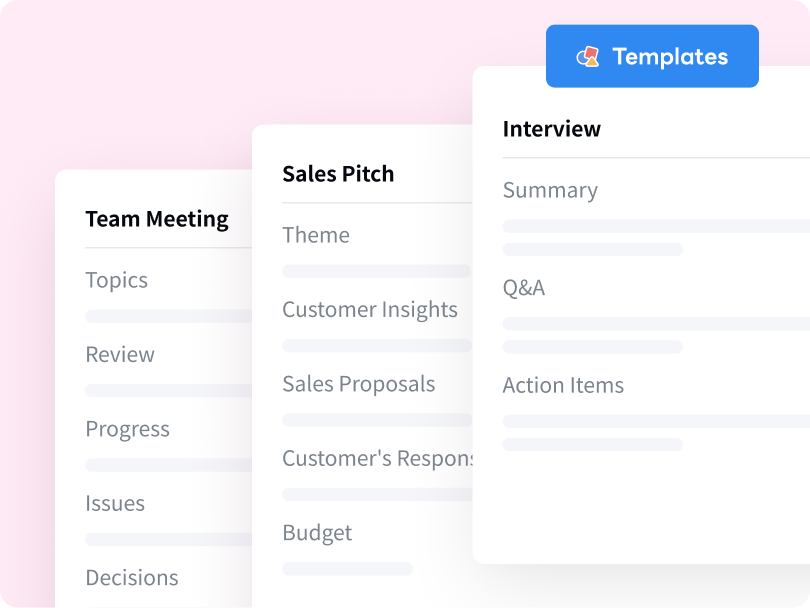
Try Notta - the best online transcription & summarization tool. Transcribe and summarize your conversations and meetings quickly with high accuracy.
Start for Free
How to Do a Good Summary on PowerPoint?
PowerPoint has become synonymous with presentations — it's a free tool where you can make a slide deck and collaborate with your team. A good summary on PowerPoint can attract more audience to your presentation and even help the attendees get more clarity. Here, I'll reveal the three pillars of writing a good summary.
Include Key Points: The first thing is to write the key (or main) points in a concise and focused way. You can even use bullet points or some visual aids to keep things clear and uncluttered on slides.
Identify & Summarize Each Section: If you're giving a lengthy presentation, I'm assuming you've categorized it into different sections. While summarizing, you'll need to focus on each section and identify the key takeaway from it.
Highlight the Main Takeaway: If the presentation focuses on any problem and offers a solution, it's time to highlight it. As a presenter, you'll need to introduce the problem in the first line, followed by the solution that's offered in the presentation.
Is There an AI that Summarizes PowerPoint Slides?
Yes, there are many AI online summarizers that can summarize PowerPoint slides. Copilot in PowerPoint, for example, can read through the slides and provide a bulleted summary with key points. If you've pre-recorded presentation recordings, you are probably searching for a dedicated way to summarize the slides.
Notta is one powerful and popular AI note-taking application — and, that too, for a good reason. There's a summarizing feature for almost imaginable purposes: just upload the presentation audio/video, and Notta will automatically transcribe the spoken words and then summarize the content.
Key Takeaways
Once you discover the power of summaries, the temptation to create summaries for everything is real. But this can leave you with a new problem: a lot of manual work. So, how to summarize a presentation without much time and effort? That's where the third-party AI summary generators make it easy for you.
Notta is an AI note-taking and AI presentation summarizer tool, especially for people who are not making presentations for fun. It comes with a free generous plan and affordable paid plans that help you record, transcribe, and then summarize media files (including presentations) — with high accuracy.
Chrome Extension
Help Center
vs Otter.ai
vs Fireflies.ai
vs Happy Scribe
vs Sonix.ai
Integrations
Microsoft Teams
Google Meet
Google Drive
Audio to Text Converter
Video to Text Converter
Online Video Converter
Online Audio Converter
Online Vocal Remover
YouTube Video Summarizer

How to Write an Effective Executive Summary (free powerpoint slide)
An executive summary (also called a business proposal executive summary or executive overview) is a concise documentation of your business plan or business challenge. It should be able to stand alone, conveying the most important aspects of your business proposal in an easily digestible format.

StrategyPunk
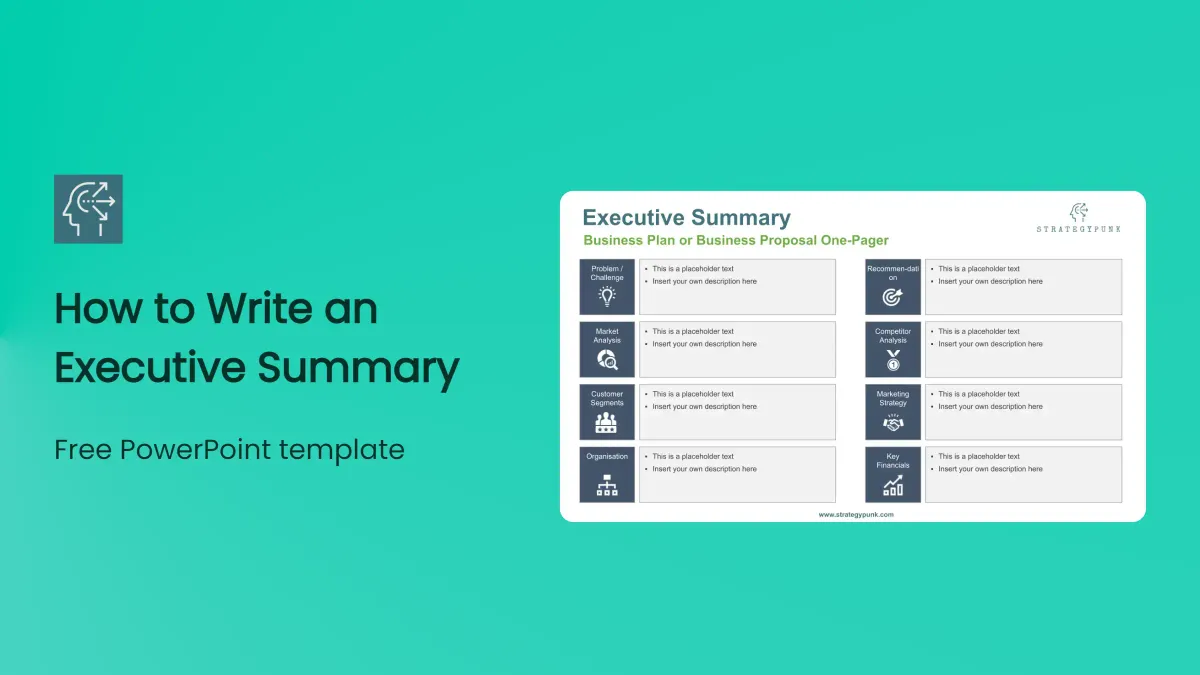
An executive summary (a business proposal or executive overview) concisely documents your business plan or business challenge. It should be able to stand alone, conveying the most important aspects of your business proposal in an easily digestible format.
Today, more than ever, executives are flooded with information. At any given moment, a busy executive can have on their desk an endless stream of memos, emails, reports, and documents requesting their attention. To stand out from the crowd and get noticed by the busy executive, you need to craft the executive summary of your paper so that it is concise and compelling.
A practical executive summary will inform and motivate the reader to dive deeper into the rest of your document.
Read on for more details about an executive summary and how to write one effectively.
What is an Executive Summary?
An executive summary is a concise overview of your business plan. This is the first section of your business proposal that executives, investors, or team members will read. The executive summary is usually the first section of a business plan, but it can also appear at the end of a report, following an introduction and other related material.
It is a short synopsis that highlights the report's main points and is meant to inform readers about the report’s findings and conclusions.
Why write an Executive Summary?
The benefits of an executive summary are two-fold:
Firstly, it allows readers to quickly assess whether the rest of the business plan is relevant to them – they can quickly evaluate the key points, decide what they want to read, and move on. This is useful if several executives or investors have requested your business plan.
Secondly, it allows you to craft a narrative tailored to your audience and speaks to their interests. So, even if your readers decide to read the entire business plan or proposal, they will understand it better because they have been given an overview beforehand.
A step-by-step guide to writing a compelling Executive Summary
The first thing to do is to ask yourself: Who is reading this? What are their interests? What do they want to know about my business? This will help you decide on your Executive Summary's content and tone.
Next, could you decide on the format? Most businesses write their Executive Summary in a slide or PowerPoint format. Executives or investors are accustomed to the design.
Could you decide on a headline that summarises your business? This can be a number, percentage, or statistic highlighting your key difference point. Choose the main points you want to cover in the summary and structure your Executive Summary accordingly.
An executive summary's purpose is to ensure you understand the main ideas of your writing clearly and concisely. It should be written so that a reader with only time to skim it can understand the critical points of your writing. Make sure to proofread your Executive Summary and align it with the rest of your analysis or argumentation before submitting it to an executive, board, or investors.
Some people use an executive summary as their first draft and then revise it for clarity based on feedback from readers.
What is the format of an executive summary?
Executive summary (sometimes called “summary”) is a one- to two-page overview of the main points in a written document. The purpose of the executive summary is to give readers a glance at the key issues and topics covered by the document.
The executive summary should be written first, followed by the rest of the body text elaborating on those points. In addition to summarizing a document, an executive summary can serve as a teaser for potential readers interested in reading more about the subject matter. When writing an executive summary, readers must remember that they want maximum clarity and brevity.
Avoid excessive detail and jargon — stick to high-level concepts and core ideas critical to understanding your document's content.
We recommend preparing the executive summary in PowerPoint or Google Slides format. Executives or investors are accustomed to the format.
What Information is included in an Executive Summary?
The executive summary is the first thing an executive or investor will read while looking at your business plan or proposal. A practical executive summary should include a compelling problem/challenge and recommendation.
So, what should I include in your executive summary to make it successful?
Problem (or Challenge)
The problem section of an executive summary should be concise but persuasive. This section should explain the problem to the reader without making them feel as if they are being sold something. Please keep it in a neutral tone.
Recommendation
The recommendation section should provide the solution to the problem, telling them why they need to invest in this idea. It must show how this solution is feasible.
A good executive summary has several vital features to support the argumentation:
- Market analysis
- Competitor analysis
- Customer segments (or Sales strategy)
- Marketing strategy
- Business structure (or Organisation)
- Key financials
Of course, more than one size fits solution is needed. You can adapt our template for your purposes. Our template is fully editable.
How long is an executive summary?
Try to create an executive summary that is between 5-10% of the length of the finished document (for a report or presentation that is 20 slides or less, create a one-page executive summary).
The executive summary is often the first thing an executive or investor reads when they receive your business plan or proposal. With this in mind, making it as engaging and compelling as possible is essential.
When you write your summary, it is also essential to consider who is reading it and what they want to know. By keeping these things in mind, you can write a compelling executive summary to catch an executive's or potential investors' attention.
Executive Summary Template
In powerpoint and google slides format (for subscribers).
Download the templates for free. 100% editable. Subscribe for free. It's perfect for any business professional or student.
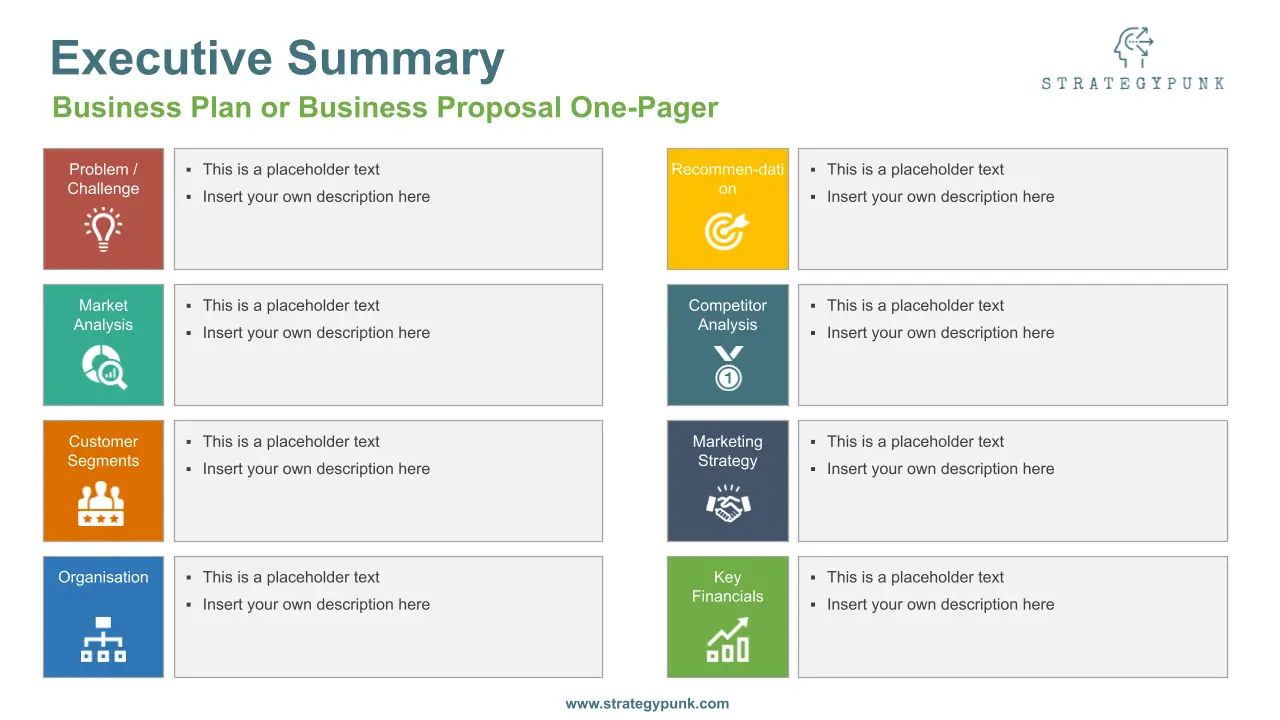
Strategic Insights 2024: A SWOT Analysis of Samsung (Plus Free PPT)
Explore Samsung's strengths and opportunities with our free Strategic Insights 2024 PowerPoint template. Dive into the SWOT analysis now!

Xpeng SWOT Analysis: Free PPT Template and In-Depth Insights (free file)
Unlock key insights into Xpeng with our free SWOT analysis PPT template. Dive deep into its business dynamics at no cost.

Strategic Insights 2024: A SWOT Analysis of Nestle (Plus Free PPT)
Explore Nestle's strategic outlook with our SWOT analysis for 2024. This PowerPoint template highlights key areas for growth and challenges.

2024 Business Disruption: Navigating Growth Through Shaping Strategy
Discover the importance of being a shaper in 2023's business ecosystem. Shaping strategy, attracting a critical mass of participants, and finding the right strategic path to create value.

How to Summarize a Presentation: 5 Easy Steps
Table of Contents
Introduction
Different people have varying needs for summaries. For a student, summaries are a great way to keep notes. They help them during their exam preparations.
In businesses, summaries are often required during executive meetings. Any kind of report, plan, or strategy could require an executive summary. This is also where summarizing presentations is required. In businesses, presentations are much more valuable and time-saving than a simple article or paper.
The reason presentations are used is that they can, paired with images and graphs, effectively utilize the least amount of text. However, even these need to be summarized frequently because the executives do not have a lot of time to go through an entire presentation.In this post, we will check out some ways to summarize presentations.
Using a Tool
Not all people have the time to manually summarize a presentation. Businessmen, in general, are always short on time especially when they belong to large corporations.
They can use summarizing tools to generate succinct summaries of presentations or plans/strategies.
Summarizing tools are widely available on the internet. And a lot of them are free to use. A great text summarizer can summarize your content in the shortest possible time using the number of words you like. Some summarizers come with the option of condensing the source material into a paragraph or a series of bullet points. Since there are a lot of tools to pick from, you can try out a few and use the ones that suit your needs best.
By Hand/Manually
Read and understand the presentation, segment the material into sections, identify key points, write the summary, compare to the original and revise.
Summarizing can be a difficult task depending on what kind of topic is being talked about or who is doing the summarizing. Some people have a way with words and they are naturally able to say things in a concise manner, while others have to learn how to do so.
Summarizing is a skill that is required in presentations and speeches. These are both mediums using which information and possibly new concepts are provided to the audience. At the end of both, a summary is required to nicely round up the entire topic. Using summarizing tools is an easier way as compared to manually writing a summary since they save a lot of time and effort.
Related Posts:
- English Summary Home
- Importance of the UPSC Special Class Railway Apprentice Exam for Aspiring Engineers
- Of Friendship Essay | Summary by Francis Bacon
- What is Digital Humanities and What is it Doing in English Departments Summary
- Random Idiom Generator
- The Raven by Edgar Allen Poe Complete Poem

- SUGGESTED TOPICS
- The Magazine
- Newsletters
- Managing Yourself
- Managing Teams
- Work-life Balance
- The Big Idea
- Data & Visuals
- Reading Lists
- Case Selections
- HBR Learning
- Topic Feeds
- Account Settings
- Email Preferences
How to Make a “Good” Presentation “Great”
- Guy Kawasaki

Remember: Less is more.
A strong presentation is so much more than information pasted onto a series of slides with fancy backgrounds. Whether you’re pitching an idea, reporting market research, or sharing something else, a great presentation can give you a competitive advantage, and be a powerful tool when aiming to persuade, educate, or inspire others. Here are some unique elements that make a presentation stand out.
- Fonts: Sans Serif fonts such as Helvetica or Arial are preferred for their clean lines, which make them easy to digest at various sizes and distances. Limit the number of font styles to two: one for headings and another for body text, to avoid visual confusion or distractions.
- Colors: Colors can evoke emotions and highlight critical points, but their overuse can lead to a cluttered and confusing presentation. A limited palette of two to three main colors, complemented by a simple background, can help you draw attention to key elements without overwhelming the audience.
- Pictures: Pictures can communicate complex ideas quickly and memorably but choosing the right images is key. Images or pictures should be big (perhaps 20-25% of the page), bold, and have a clear purpose that complements the slide’s text.
- Layout: Don’t overcrowd your slides with too much information. When in doubt, adhere to the principle of simplicity, and aim for a clean and uncluttered layout with plenty of white space around text and images. Think phrases and bullets, not sentences.
As an intern or early career professional, chances are that you’ll be tasked with making or giving a presentation in the near future. Whether you’re pitching an idea, reporting market research, or sharing something else, a great presentation can give you a competitive advantage, and be a powerful tool when aiming to persuade, educate, or inspire others.
- Guy Kawasaki is the chief evangelist at Canva and was the former chief evangelist at Apple. Guy is the author of 16 books including Think Remarkable : 9 Paths to Transform Your Life and Make a Difference.
Partner Center
- How it works
Writing a Summary – Explanation & Examples
Published by Alvin Nicolas at October 17th, 2023 , Revised On October 17, 2023
In a world bombarded with vast amounts of information, condensing and presenting data in a digestible format becomes invaluable. Enter summaries.
A summary is a brief and concise account of the main points of a larger body of work. It distils complex ideas, narratives, or data into a version that is quicker to read and easier to understand yet still retains the essence of the original content.
Importance of Summaries
The importance of summarising extends far beyond just making reading more manageable. In academic settings, summaries aid students in understanding and retaining complex materials, from textbook chapters to research articles. They also serve as tools to showcase one’s grasp of the subject in essays and reports.
In professional arenas, summaries are pivotal in business reports, executive briefings, and even emails where key points need to be conveyed quickly to decision-makers. Meanwhile, summarising skills come into play in our personal lives when we relay news stories to friends, recap a movie plot, or even scroll through condensed news or app notifications on our smartphones.
Why Do We Write Summaries?
In our modern information age, the sheer volume of content available can be overwhelming. From detailed research papers to comprehensive news articles, the quest for knowledge is often met with lengthy and complex resources. This is where the power of a well-crafted summary comes into play. But what drives us to create or seek out summaries? Let’s discuss.
Makes Important Things Easy to Remember
At the heart of summarisation is the goal to understand. A well-written summary aids in digesting complex material. By distilling larger works into their core points, we reinforce the primary messages, making them easier to remember. This is especially crucial for students who need to retain knowledge for exams or professionals prepping for a meeting based on a lengthy report.
Simplification of Complex Topics
Not everyone is an expert in every field. Often, topics come laden with jargon, intricate details, and nuanced arguments. Summaries act as a bridge, translating this complexity into accessible and straightforward content. This is especially beneficial for individuals new to a topic or those who need just the highlights without the intricacies.
Aid in Researching and Understanding Diverse Sources
Researchers, writers, and academics often wade through many sources when working on a project. This involves finding sources of different types, such as primary or secondary sources , and then understanding their content. Sifting through each source in its entirety can be time-consuming. Summaries offer a streamlined way to understand each source’s main arguments or findings, making synthesising information from diverse materials more efficient.
Condensing Information for Presentation or Sharing
In professional settings, there is often a need to present findings, updates, or recommendations to stakeholders. An executive might not have the time to go through a 50-page report, but they would certainly appreciate a concise summary highlighting the key points. Similarly, in our personal lives, we often summarise movie plots, book stories, or news events when sharing with friends or family.
Characteristics of a Good Summary
Crafting an effective summary is an art. It’s more than just shortening a piece of content; it is about capturing the essence of the original work in a manner that is both accessible and true to its intent. Let’s explore the primary characteristics that distinguish a good summary from a mediocre one:
Conciseness
At the core of a summary is the concept of brevity. But being concise doesn’t mean leaving out vital information. A good summary will:
- Eliminate superfluous details or repetitive points.
- Focus on the primary arguments, events, or findings.
- Use succinct language without compromising the message.
Objectivity
Summarising is not about infusing personal opinions or interpretations. A quality summary will:
- Stick to the facts as presented in the original content.
- Avoid introducing personal biases or perspectives.
- Represent the original author’s intent faithfully.
A summary is meant to simplify and make content accessible. This is only possible if the summary itself is easy to understand. Ensuring clarity involves:
- Avoiding jargon or technical terms unless they are essential to the content. If they are used, they should be clearly defined.
- Structuring sentences in a straightforward manner.
- Making sure ideas are presented in a way that even someone unfamiliar with the topic can grasp the primary points.
A jumble of ideas, no matter how concise, will not make for a good summary. Coherence ensures that there’s a logical flow to the summarised content. A coherent summary will:
- Maintain a logical sequence, often following the structure of the original content.
- Use transition words or phrases to connect ideas and ensure smooth progression.
- Group related ideas together to provide structure and avoid confusion.
Steps of Writing a Summary
The process of creating a compelling summary is not merely about cutting down content. It involves understanding, discerning, and crafting. Here is a step-by-step guide to writing a summary that encapsulates the essence of the original work:
Reading Actively
Engage deeply with the content to ensure a thorough understanding.
- Read the entire document or work first to grasp its overall intent and structure.
- On the second read, underline or highlight the standout points or pivotal moments.
- Make brief notes in the margins or on a separate sheet, capturing the core ideas in your own words.
Identifying the Main Idea
Determine the backbone of the content, around which all other details revolve.
- Ask yourself: “What is the primary message or theme the author wants to convey?”
- This can often be found in the title, introduction, or conclusion of a piece.
- Frame the main idea in a clear and concise statement to guide your summary.
List Key Supporting Points
Understand the pillars that uphold the main idea, providing evidence or depth to the primary message.
- Refer back to the points you underlined or highlighted during your active reading.
- Note major arguments, evidence, or examples that the author uses to back up the main idea.
- Prioritise these points based on their significance to the main idea.
Draft the Summary
Convert your understanding into a condensed, coherent version of the original.
- Start with a statement of the main idea.
- Follow with the key supporting points, maintaining logical order.
- Avoid including trivial details or examples unless they’re crucial to the primary message.
- Use your own words, ensuring you are not plagiarising the original content.
Fine-tune your draft to ensure clarity, accuracy, and brevity.
- Read your draft aloud to check for flow and coherence.
- Ensure that your summary remains objective, avoiding any personal interpretations or biases.
- Check the length. See if any non-essential details can be removed without sacrificing understanding if it is too lengthy.
- Ensure clarity by ensuring the language is straightforward, and the main ideas are easily grasped.
The research done by our experts have:
- Precision and Clarity
- Zero Plagiarism
- Authentic Sources

Dos and Don’ts of Summarising Key Points
Summarising, while seemingly straightforward, comes with its nuances. Properly condensing content demands a balance between brevity and fidelity to the original work. To aid in crafting exemplary summaries, here is a guide on the essential dos and don’ts:
Use your Own Words
This ensures that you have truly understood the content and are not merely parroting it. It also prevents issues of plagiarism.
Tip: After reading the original content, take a moment to reflect on it. Then, without looking at the source, write down the main points in your own words.
Attribute Sources Properly
Giving credit is both ethical and provides context to readers, helping them trace back to the original work if needed. How to cite sources correctly is a skill every writer should master.
Tip: Use signal phrases like “According to [Author/Source]…” or “As [Author/Source] points out…” to seamlessly incorporate attributions.
Ensure Accuracy of the Summarised Content
A summary should be a reliable reflection of the original content. Distorting or misrepresenting the original ideas compromises the integrity of the summary.
Tip: After drafting your summary, cross-check with the original content to ensure all key points are represented accurately and ensure you are referencing credible sources .
Avoid Copy-Pasting Chunks of Original Content
This not only raises plagiarism concerns but also shows a lack of genuine engagement with the material.
Tip: If a particular phrase or sentence from the original is pivotal and cannot be reworded without losing its essence, use block quotes , quotation marks, and attribute the source.
Do not Inject your Personal Opinion
A summary should be an objective reflection of the source material. Introducing personal biases or interpretations can mislead readers.
Tip: Stick to the facts and arguments presented in the original content. If you find yourself writing “I think” or “In my opinion,” reevaluate the sentence.
Do not Omit Crucial Information
While a summary is meant to be concise, it shouldn’t be at the expense of vital details that are essential to understanding the original content’s core message.
Tip: Prioritise information. Always include the main idea and its primary supports. If you are unsure whether a detail is crucial, consider its impact on the overall message.
Examples of Summaries
Here are a few examples that will help you get a clearer view of how to write a summary.
Example 1: Summary of a News Article
Original Article: The article reports on the recent discovery of a rare species of frog in the Amazon rainforest. The frog, named the “Emerald Whisperer” due to its unique green hue and the soft chirping sounds it makes, was found by a team of researchers from the University of Texas. The discovery is significant as it offers insights into the biodiversity of the region, and the Emerald Whisperer might also play a pivotal role in understanding the ecosystem balance.
Summary: Researchers from the University of Texas have discovered a unique frog, termed the “Emerald Whisperer,” in the Amazon rainforest. This finding sheds light on the region’s biodiversity and underscores the importance of the frog in ecological studies.
Example 2: Summary of a Research Paper
Original Paper: In a study titled “The Impact of Urbanisation on Bee Populations,” researchers conducted a year-long observation on bee colonies in three urban areas and three rural areas. Using specific metrics like colony health, bee productivity, and population size, the study found that urban environments saw a 30% decline in bee populations compared to rural settings. The research attributes this decline to factors like pollution, reduced green spaces, and increased temperatures in urban areas.
Summary: A study analysing the effects of urbanisation on bee colonies found a significant 30% decrease in bee populations in urban settings compared to rural areas. The decline is linked to urban factors such as pollution, diminished greenery, and elevated temperatures.
Example 3: Summary of a Novel
Original Story: In the novel “Winds of Fate,” protagonist Clara is trapped in a timeless city where memories dictate reality. Throughout her journey, she encounters characters from her past, present, and imagined future. Battling her own perceptions and a menacing shadow figure, Clara seeks an elusive gateway to return to her real world. In the climax, she confronts the shadow, which turns out to be her own fear, and upon overcoming it, she finds her way back, realising that reality is subjective.
Summary: “Winds of Fate” follows Clara’s adventures in a surreal city shaped by memories. Confronting figures from various phases of her life and battling a symbolic shadow of her own fear, Clara eventually discovers that reality’s perception is malleable and subjective.
Frequently Asked Questions
How long is a summary.
A summary condenses a larger piece of content, capturing its main points and essence. It is usually one-fourth of the original content.
What is a summary?
A summary is a concise representation of a larger text or content, highlighting its main ideas and points. It distils complex information into a shorter form, allowing readers to quickly grasp the essence of the original material without delving into extensive details. Summaries prioritise clarity, brevity, and accuracy.
When should I write a summary?
Write a summary when you need to condense lengthy content for easier comprehension and recall. It’s useful in academic settings, professional reports, presentations, and research to highlight key points. Summaries aid in comparing multiple sources, preparing for discussions, and sharing essential details of extensive materials efficiently with others.
How can I summarise a source without plagiarising?
To summarise without plagiarising: Read the source thoroughly, understand its main ideas, and then write the summary in your own words. Avoid copying phrases verbatim. Attribute the source properly. Use paraphrasing techniques and cross-check your summary against the original to ensure distinctiveness while retaining accuracy. Always prioritise understanding over direct replication.
What is the difference between a summary and an abstract?
A summary condenses a text, capturing its main points from various content types like books, articles, or movies. An abstract, typically found in research papers and scientific articles, provides a brief overview of the study’s purpose, methodology, results, and conclusions. Both offer concise versions, but abstracts are more structured and specific.
You May Also Like
A secondary source refers to any material that interprets, analyses, or reviews information originally presented elsewhere. Unlike primary sources, which offer direct evidence or first-hand testimony, secondary sources work on those original materials, offering commentary, critiques, and perspectives.
From academic research to personal blogs, the bedrock of trust and credibility is often established by one simple act: source citing. Whether we are constructing a thesis for a graduate program or debunking a myth on a personal blog, providing the origins of our information bolsters our arguments and pays homage to the original creators of that knowledge.
USEFUL LINKS
LEARNING RESOURCES

COMPANY DETAILS

- How It Works

Improve your practice.
Enhance your soft skills with a range of award-winning courses.
Design Ideas for your Presentation Summary Slide
November 7, 2017 - Dom Barnard
As mentioned in this article , a summary slide will be more beneficial to your audience than a ‘Thank You’ slide. It gives the audience a chance to recap on the main points of the presentation and gives them areas to think about for any audience questions.
What should be included in the summary slide?
A summary slide should include the main points of your presentation which support the message you are trying to get across. You can also add your contact details, such as email address, as people are likely to photograph this slide which their mobiles to remind them of the presentation. Keep the summary slide up when you are going through the questions and answers session.
When going through the summary, briefly explain each point and if possible, highlight the summary point in a different colour when you are talking about it. This keeps it as simple as possible for the audience as their attention span will have reduced by end of your presentation .
Design and content tips
MS PowerPoint offers different well designed layouts for your summary slide, go to Home – Slides Panel – Layout and choose a suitable layout.
Another tip is to hyperlink the points in your summery slide, in case you are asked a question about one of the points and you want to quickly refer to that slide in more detail.
You can also include visual images in the summary if they were used earlier in the presentation. People are much better at remembering images than verbal information. When talking about a summary point, you can bring up an image from that section of the presentation to jog the audiences memory.
Some simple examples
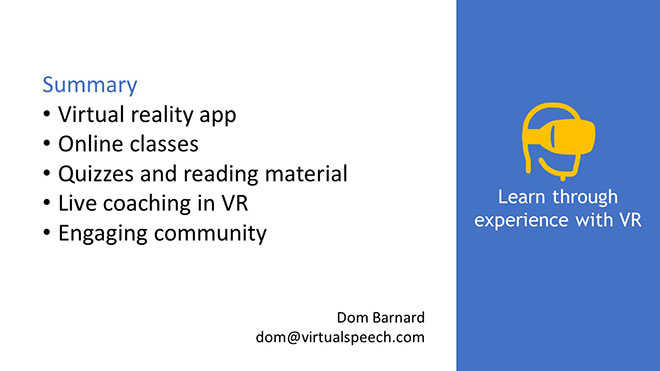
Basic summary slide with main points and contact information on it. The key message of the presentation is highlighted on the right hand side.
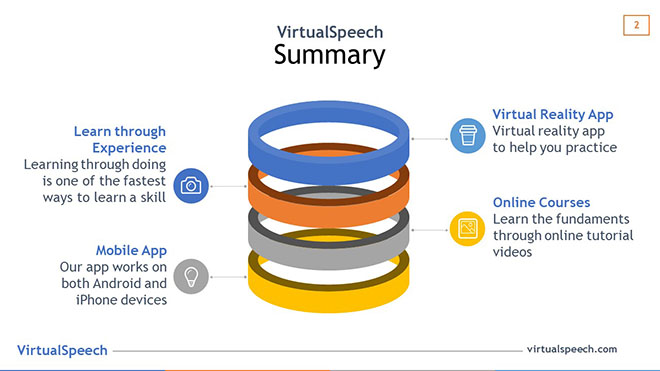
This summary slide is a little more visual, with the key points still mentioned on the slide.
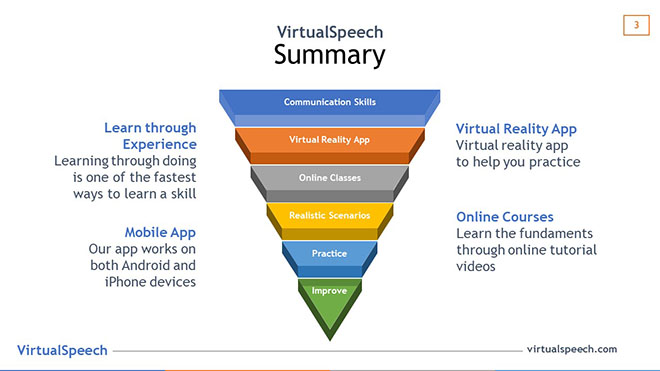
This diagram gives the audience a little more context to the information around it. The audience can see how this information leads to improving skills.

IMAGES
VIDEO
COMMENTS
Step 1: Review the Entire Presentation. Start by going through the entire PowerPoint presentation. Reviewing the presentation in its entirety allows you to get a sense of the overall flow and the key themes. Pay attention to the title slides and the concluding slides, as they often contain the main message and summary points.
2. Use Graphs and Charts to Showcase Numbers. If you want to increase the impact of your summary, you must incorporate visuals such as graphs and charts, as they provide a clear and concise way to present complex numerical data. Instead of overwhelming the audience with rows of numbers and statistics, these graphical elements convert the ...
A summary should include all of the main points or ideas in the work but avoid smaller details or ideas. You don't want to provide every aspect of the plot or smaller points in your summary. Your summary should be written using your own words. Present the main ideas objectively, avoiding your own opinion and thoughts about the work.
How to Write an Executive Summary for a Presentation. 1. Start with a Problem Statement. Think of the first paragraph as if of an opening slide for a presentation: you need to make a big compelling statement that immediately communicates your agenda.
A key component of this process is the executive summary slide - often presented as the first part of a presentation deck on a given topic or problem. An executive summary aims to provide the audience with an overview of the subject at hand or a snapshot of the key points that will be discussed in greater depth.
1. Read and take notes. First things first: Read or watch the original work you'll be summarizing. While you do, take brief pauses and explain to yourself what you just read or watched. As the main ideas start becoming clear to you, take notes. This will make the writing process easier. 2.
Table of contents. When to write a summary. Step 1: Read the text. Step 2: Break the text down into sections. Step 3: Identify the key points in each section. Step 4: Write the summary. Step 5: Check the summary against the article. Other interesting articles. Frequently asked questions about summarizing.
An executive summary slide is a one- or two-page overview of a much longer presentation added to the start of a deck. The goal is to provide a reader with the main messages, so they don't have to read the entire communication. Executive summary slides often retain the horizontal orientation of the rest of the slide deck.
A presentation summary emphasizes the core message of a talk that you want your audience to take away. Presentation summaries provide clarity on complex information. A presentation summary allows you, the speaker, to refresh your audience's memory and improve retention. Lastly, a presentation summary is a helpful reference for the audience to ...
An executive summary is a crucial document that summarizes the essence of a business proposal, plan, or project. It is the first thing an investor, partner, or executive reads to determine if a project is worth investing in. Because they're looking for high level updates, it should be concise, clear, and convincing.
6/ Engage Emotionally. Connect emotional levels with your audience by appealing to their aspirations, fears, desires, or values. They help create a deeper connection and engagement from the very beginning. Make sure your introduction is concise and to the point. Avoid unnecessary details or lengthy explanations.
First things first: the date's in the diary and you need to prepare. Let's break it down. 1. Preparing your presentation. Imagine you're a designer in the automotive industry and your boss has asked you to give a presentation. The subject: the future of the car and how it will fit with all the other modes of transport.
Before writing a summary for a presentation, make sure to time your talk! You only have fifteen minutes to deliver your presentation. Creating effective notes will help you get your point across in a short time. Don't write out your entire presentation - use your outline to create quick reminders of what you want to say.
Ideally, an executive summary should be one page, or about 500 words maximum, depending on the font, of course. If the document to be presented is voluminous, you could have a two-page summary, but it is always better to be brief. Think of an executive summary as a trailer for a movie: you reveal just enough to pique the reader's interest.
A presentation summary is a short, sweet, ... Writing a summary of lengthy videos, articles, documents, interviews, and presentations is one method to help everyone get all the important information in a clear and concise way. However, condensing all information into a few paragraphs (or one page) isn't an easy task.
This clarifies the overall purpose of your talk and reinforces your reason for being there. Follow these steps: Signal that it's nearly the end of your presentation, for example, "As we wrap up/as we wind down the talk…". Restate the topic and purpose of your presentation - "In this speech I wanted to compare…". 5.
Revise and proofread. Be the first to add your personal experience. 5. Use keywords and a catchy title. Be the first to add your personal experience. 6. Here's what else to consider. Be the ...
5. Write the summary. You can start your summary with the author's name and the title of the text. For example, you can use some variation of, "According to Martin Somers in 'The Child and the Wolf,'" to introduce your text. Then, include the thesis of the author in your first sentence.
Try to create an executive summary that is between 5-10% of the length of the finished document (for a report or presentation that is 20 slides or less, create a one-page executive summary). Conclusion. The executive summary is often the first thing an executive or investor reads when they receive your business plan or proposal.
Using a Tool. By Hand/Manually. Read and Understand the Presentation. Segment the Material into Sections. Identify Key Points. Write the Summary. Compare to the Original and Revise. Conclusion.
Summary. A strong presentation is so much more than information pasted onto a series of slides with fancy backgrounds. Whether you're pitching an idea, reporting market research, or sharing ...
Here are a few examples that will help you get a clearer view of how to write a summary. Example 1: Summary of a News Article. Original Article: The article reports on the recent discovery of a rare species of frog in the Amazon rainforest. The frog, named the "Emerald Whisperer" due to its unique green hue and the soft chirping sounds it ...
Read through your notes in your EL file and go through these slides to revise for your test. Education. 1 of 20. Download Now. Download to read offline. Essential steps and techniques for effective summary writing - Download as a PDF or view online for free.
Basic summary slide with main points and contact information on it. The key message of the presentation is highlighted on the right hand side. This summary slide is a little more visual, with the key points still mentioned on the slide. This diagram gives the audience a little more context to the information around it.